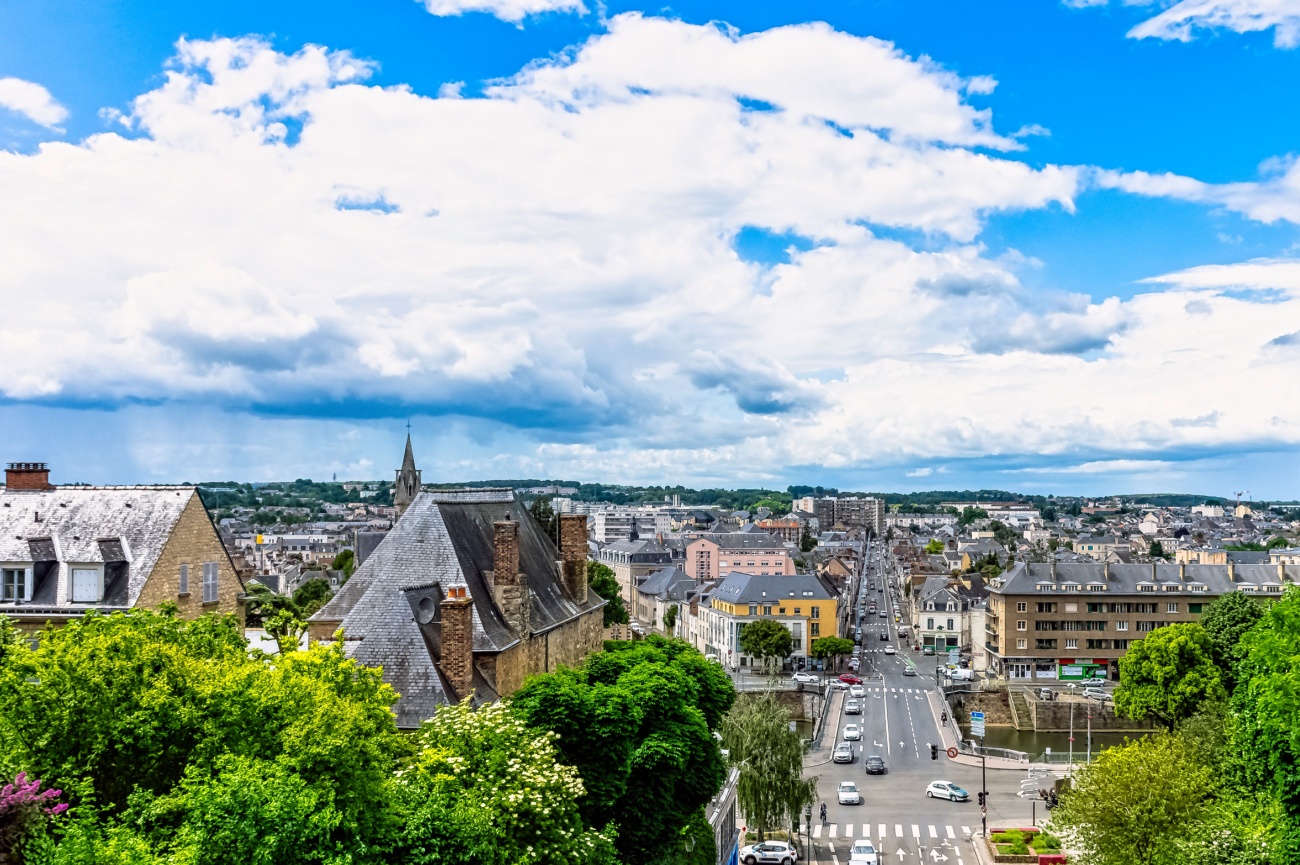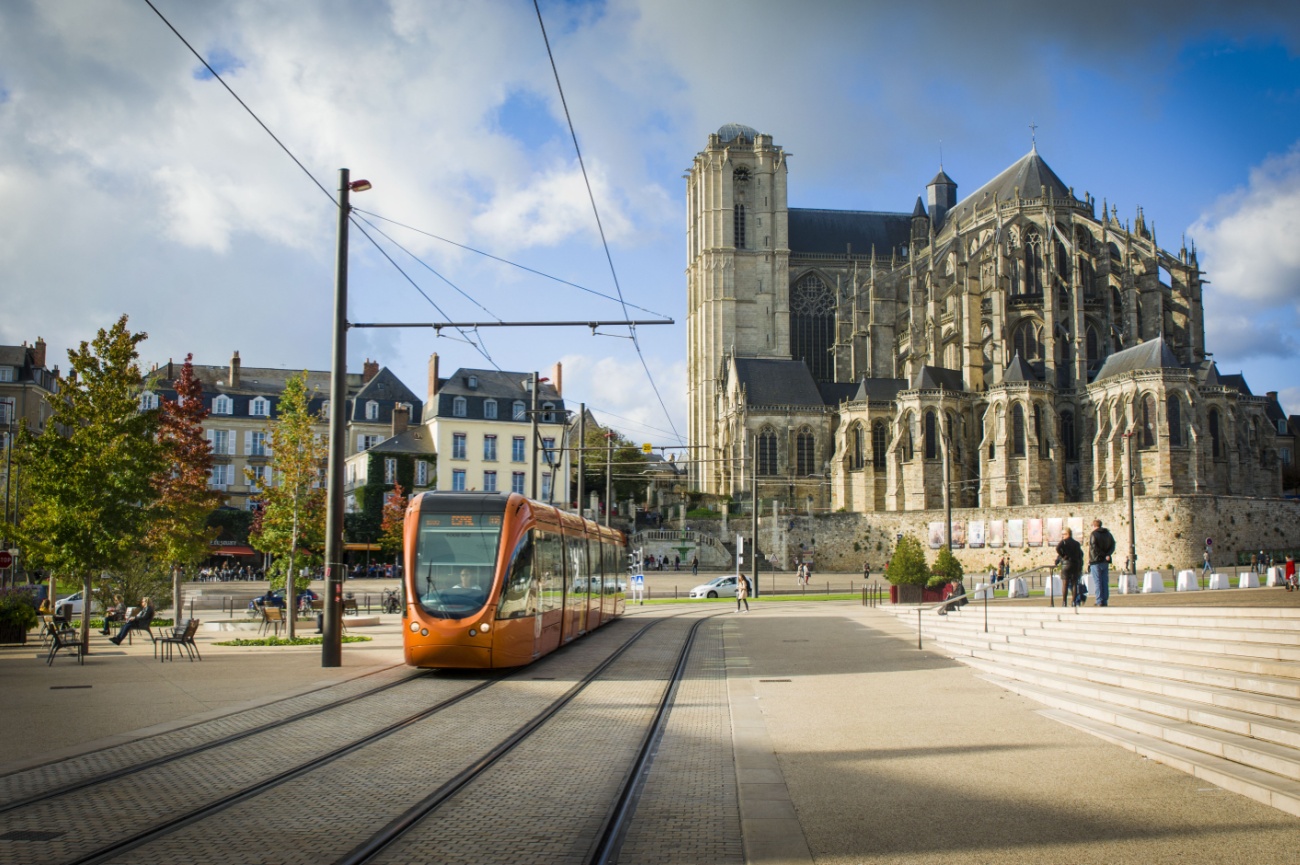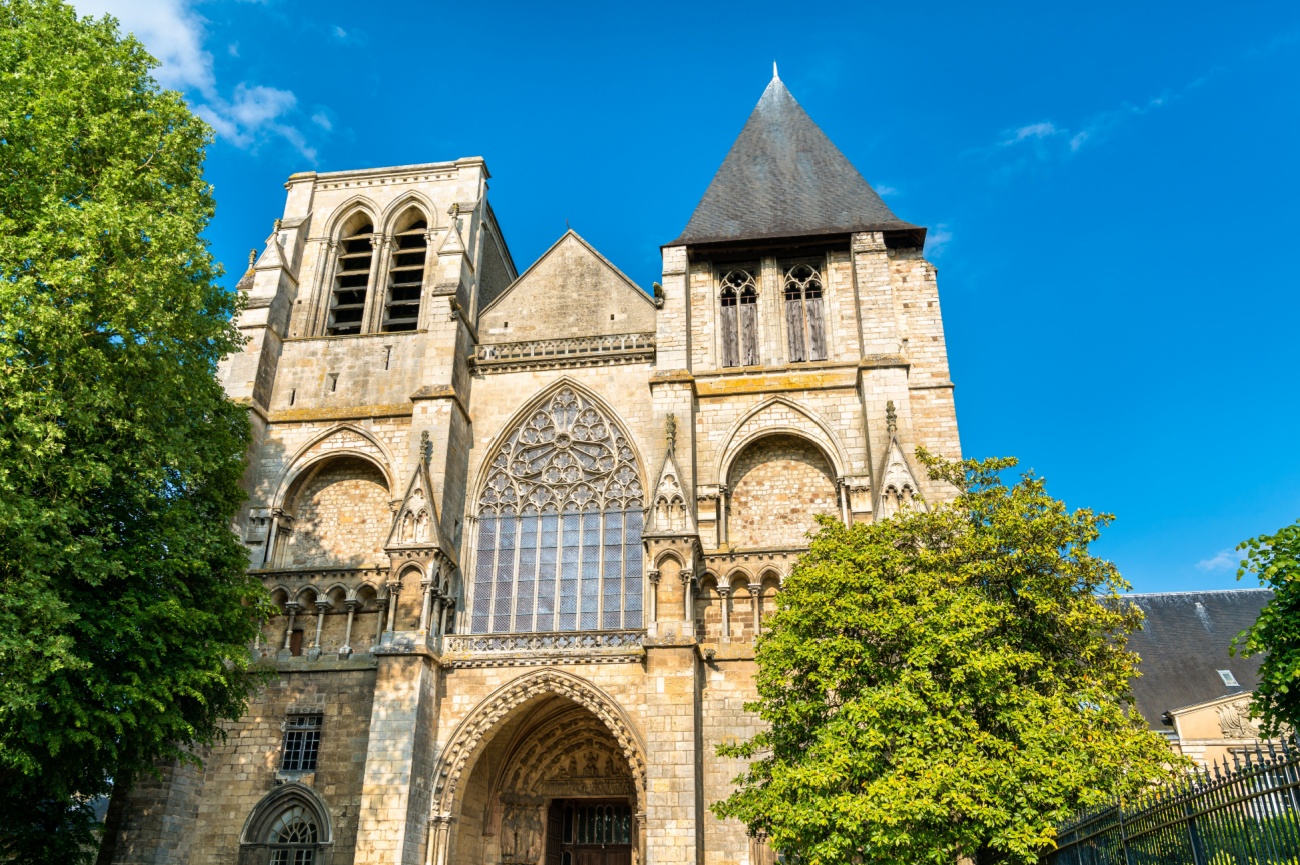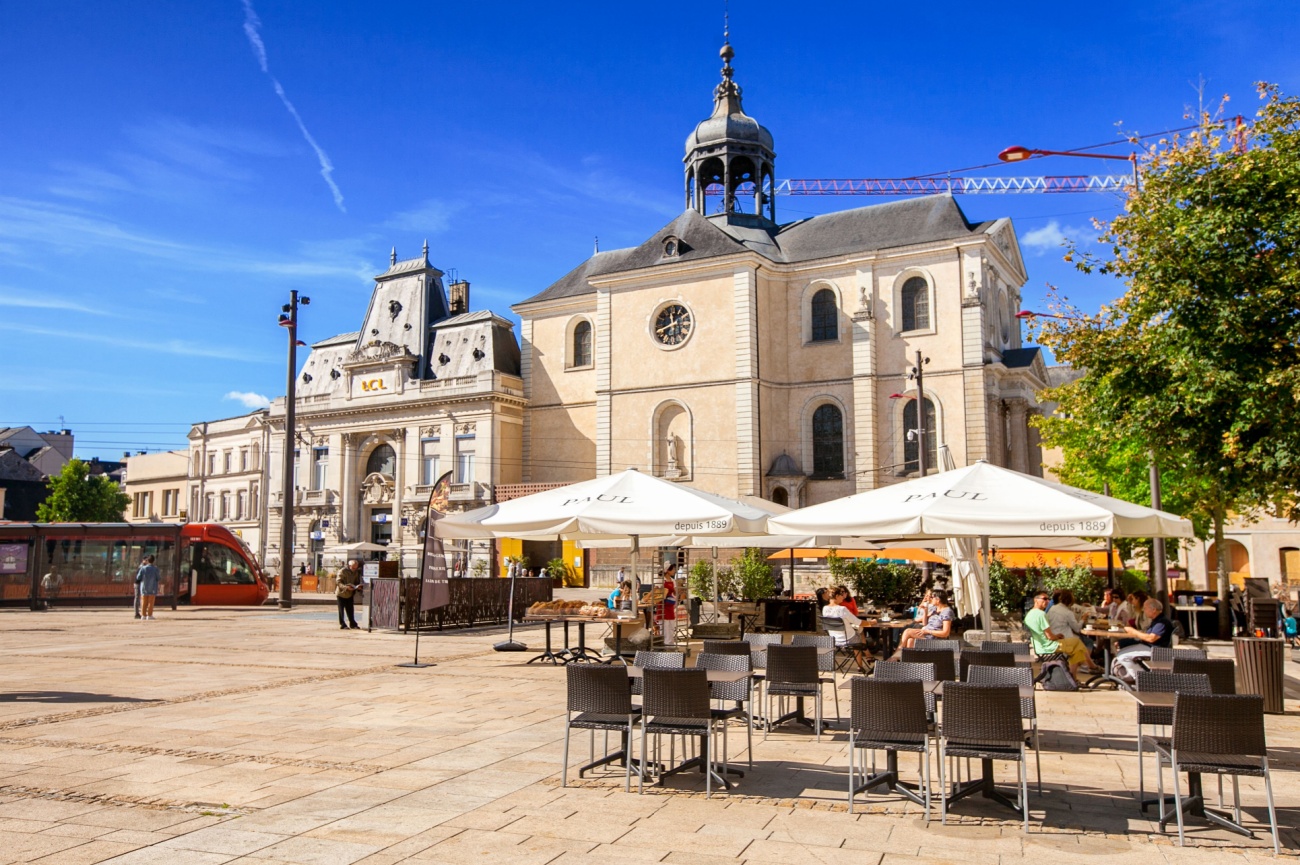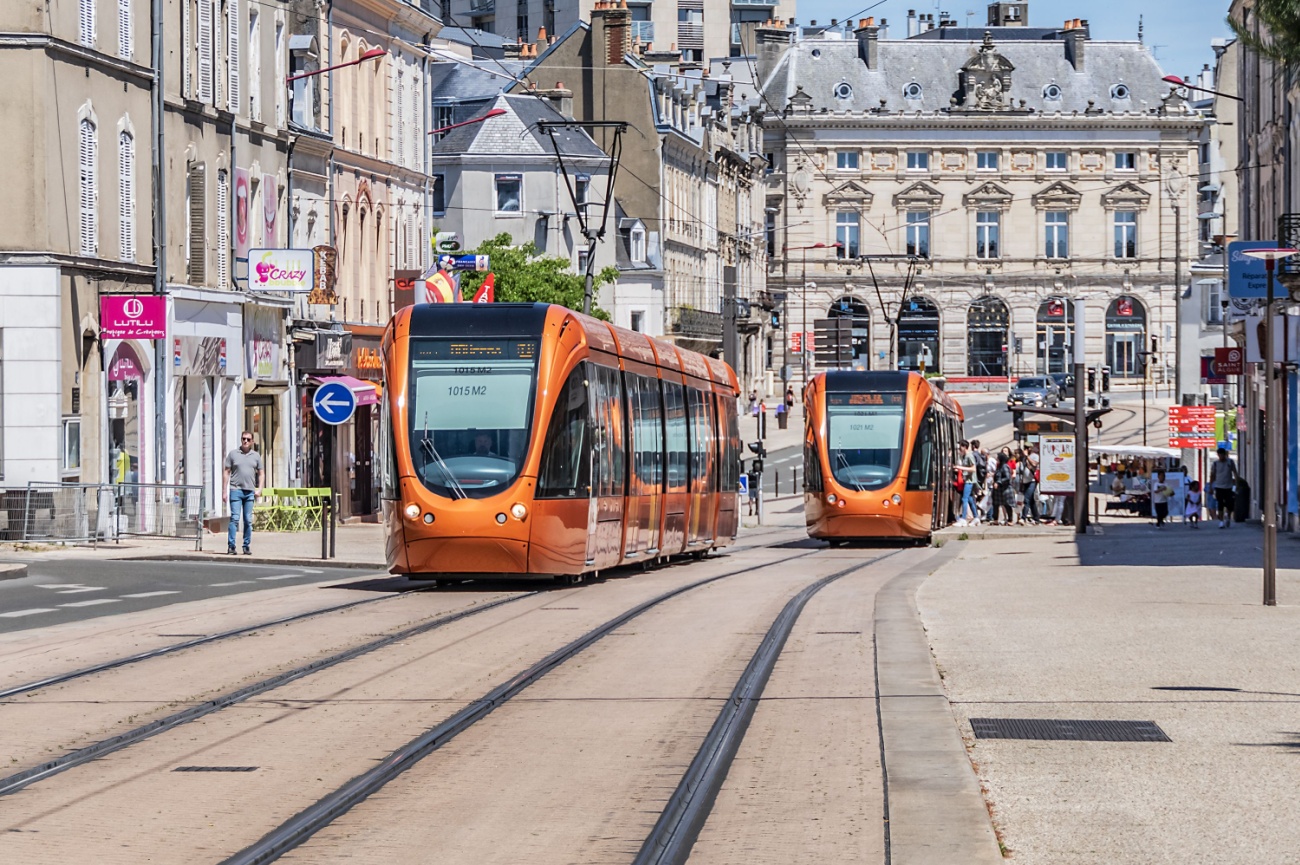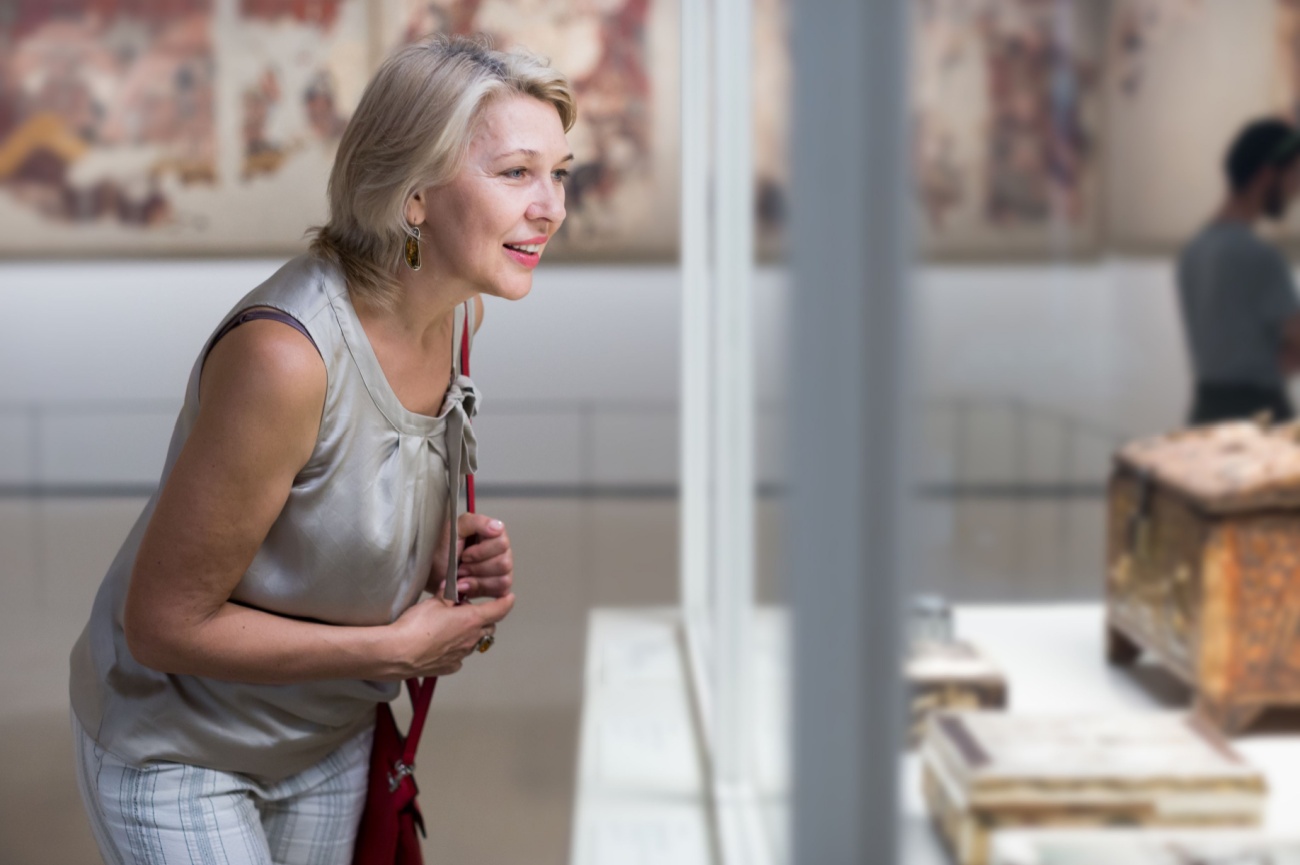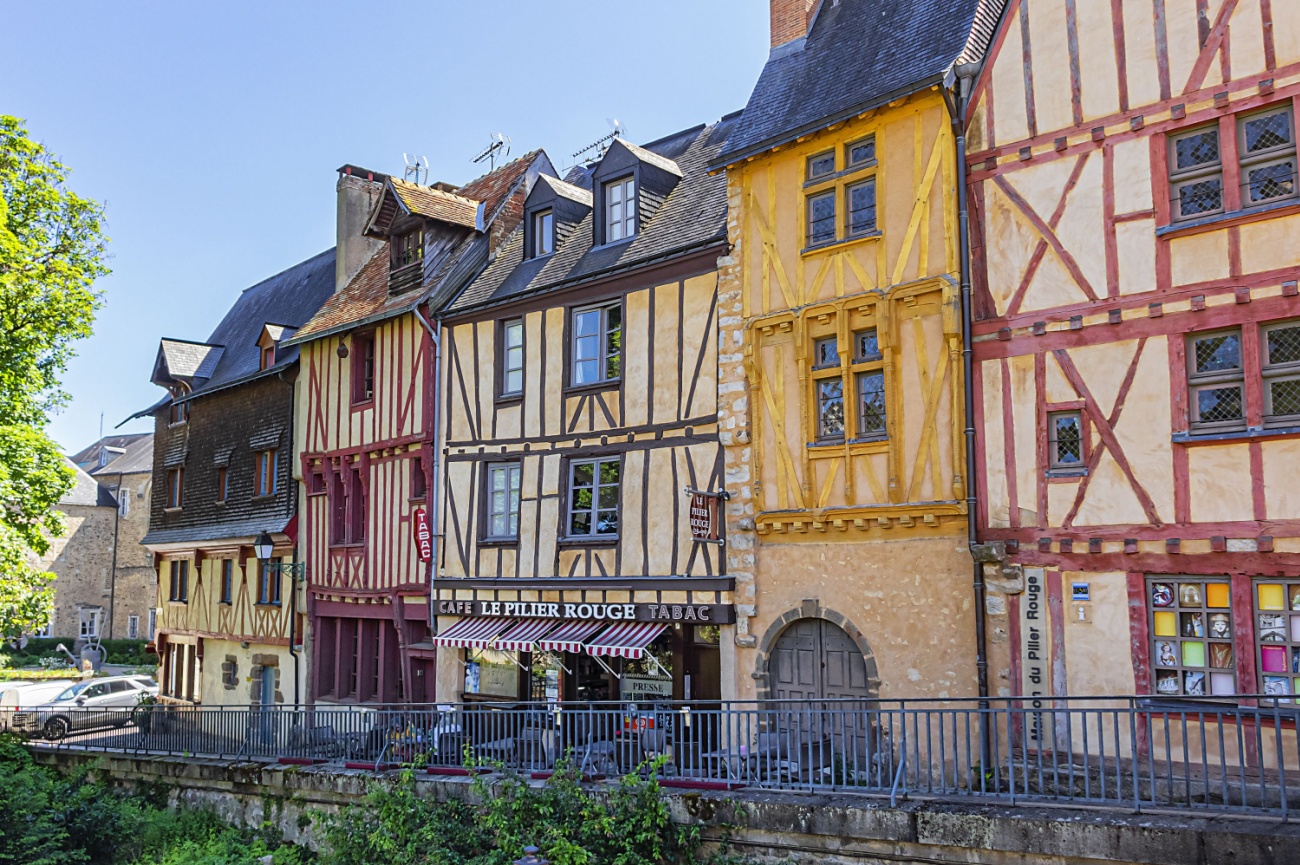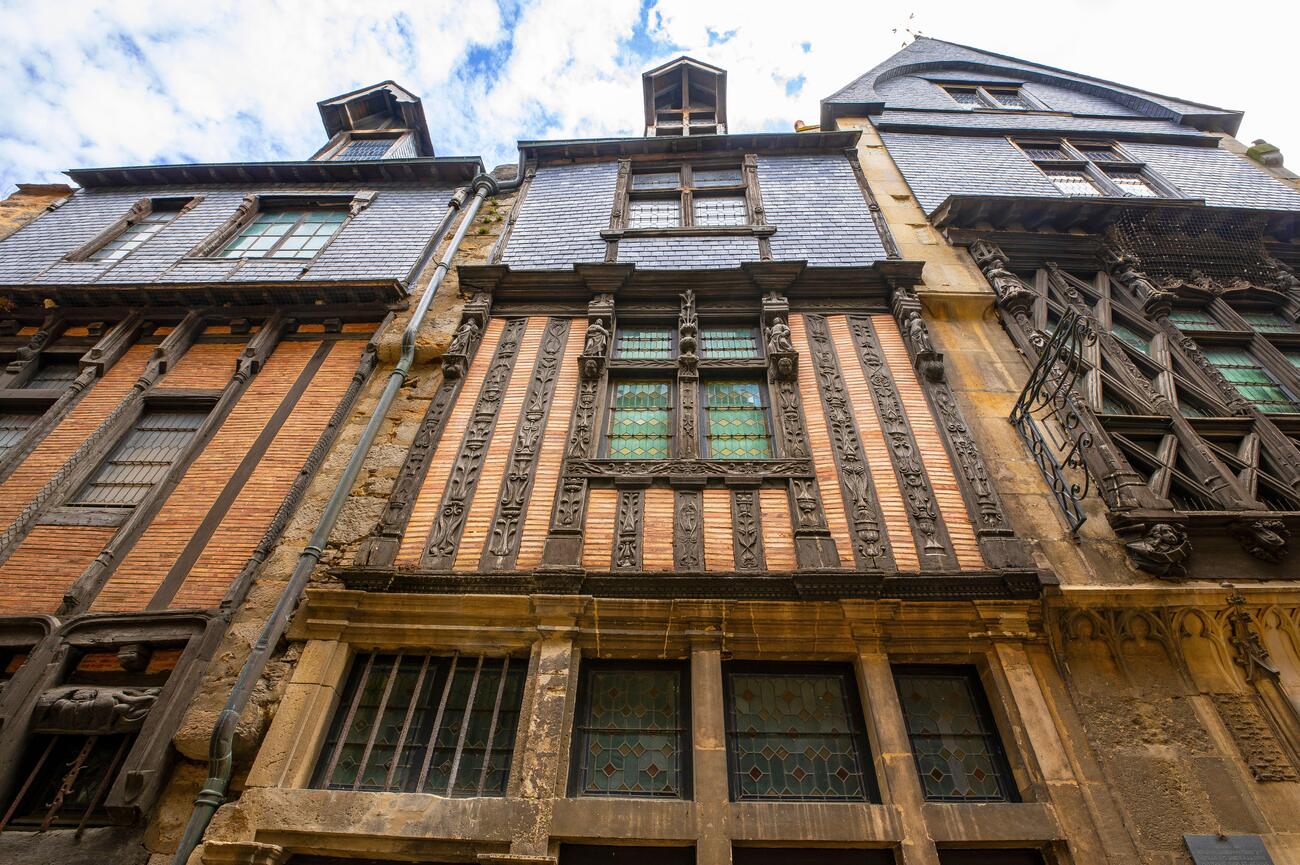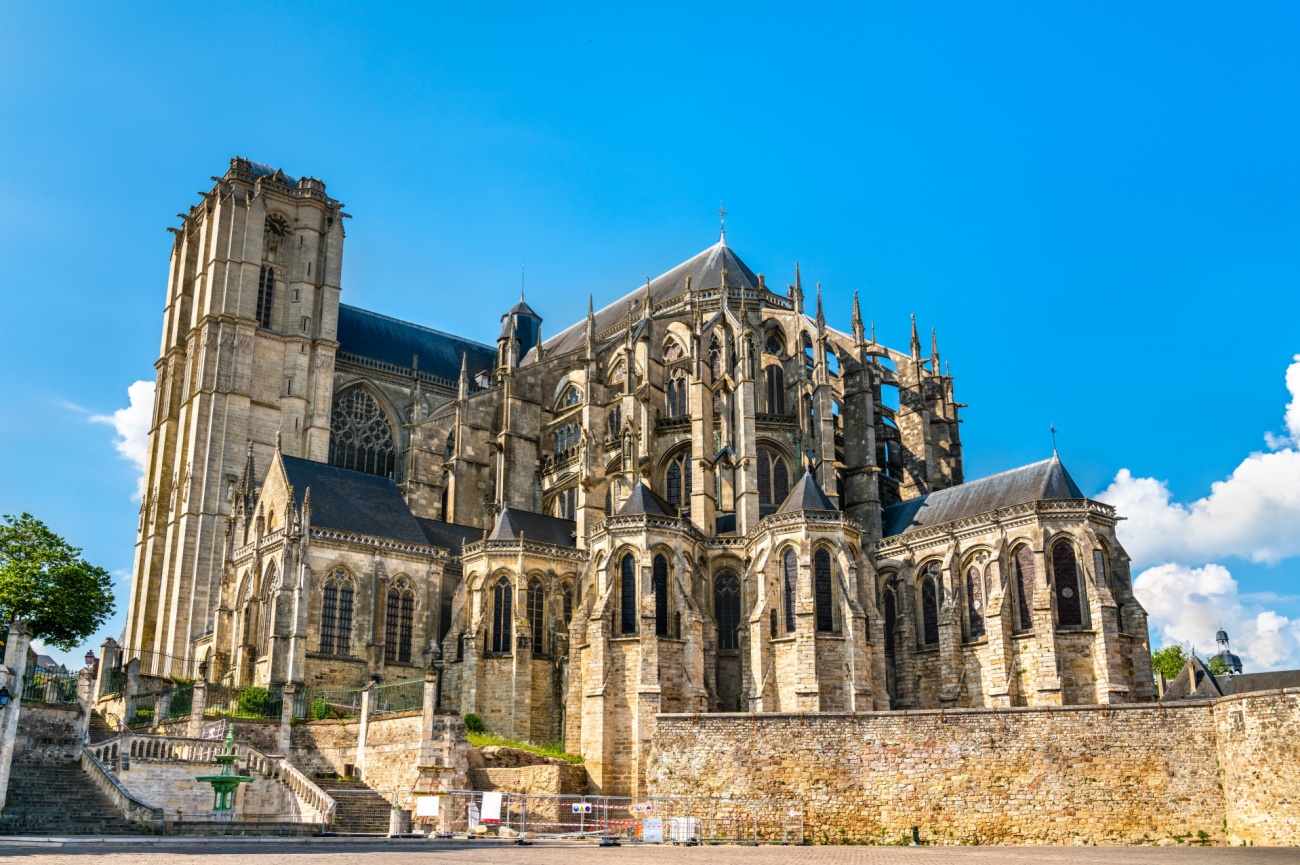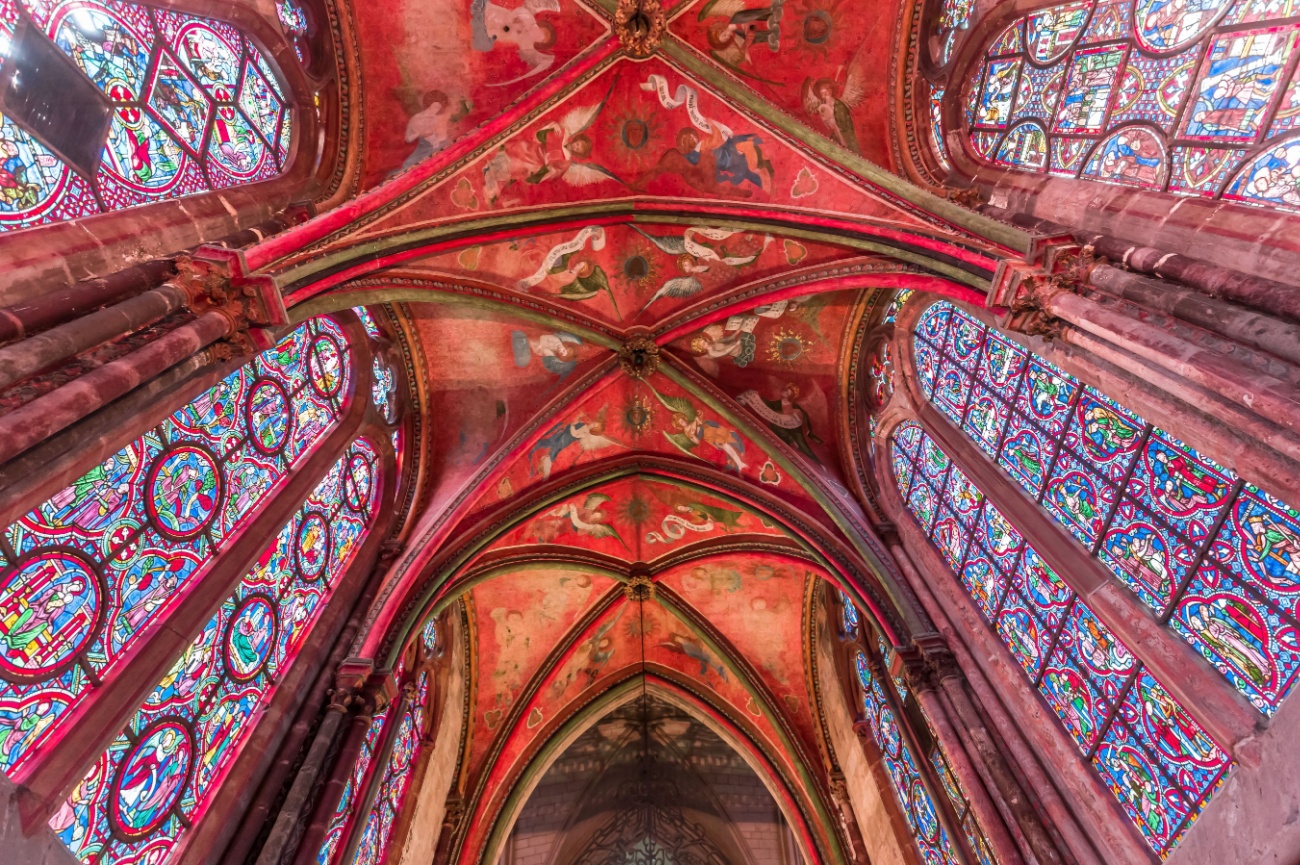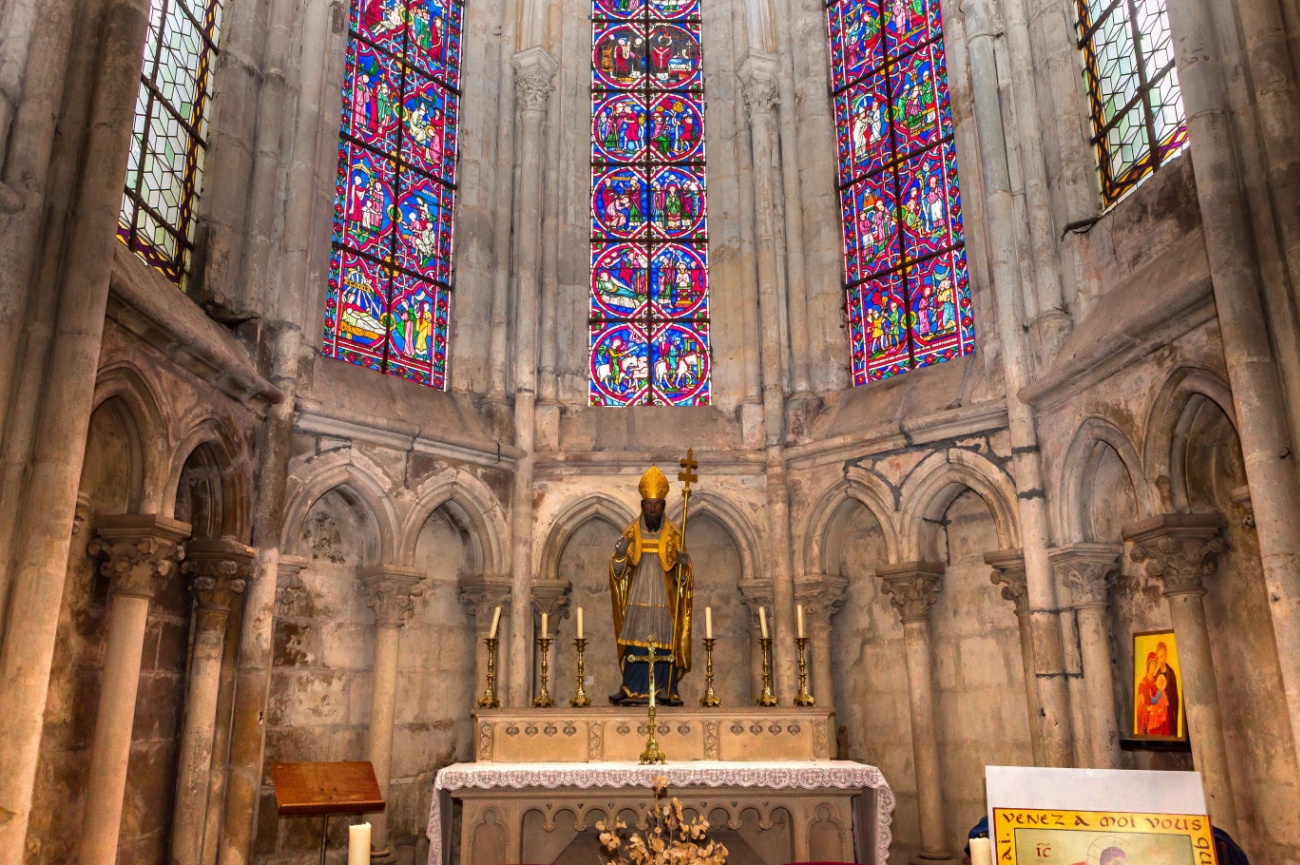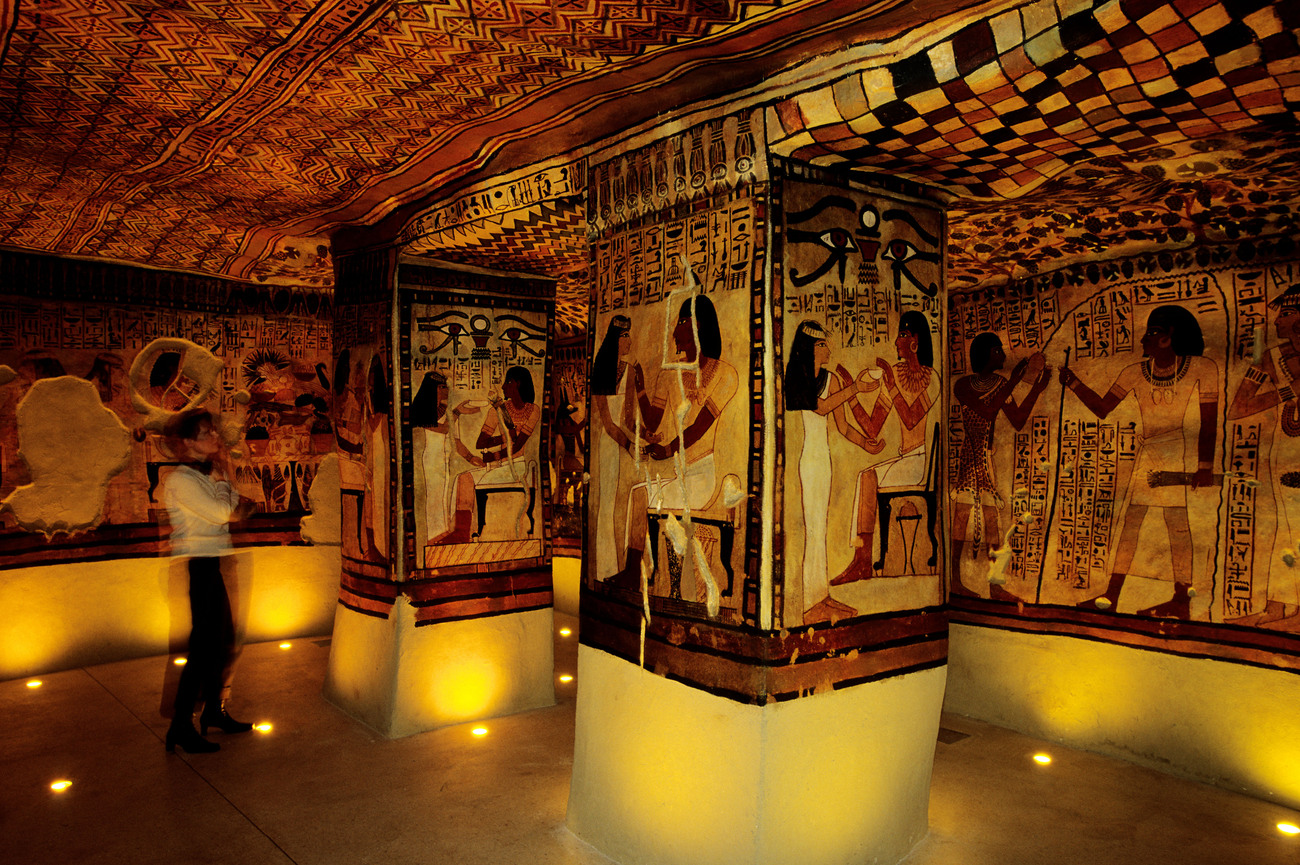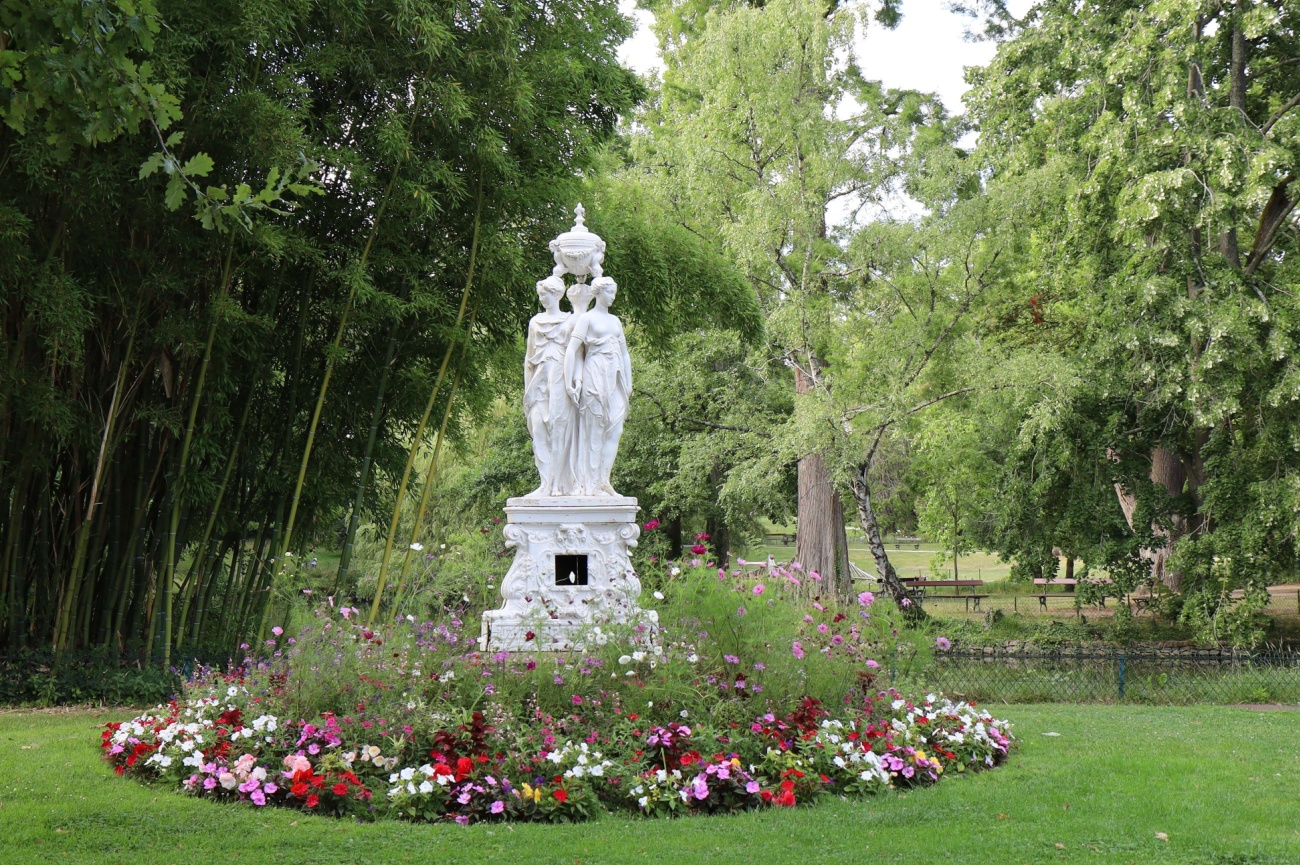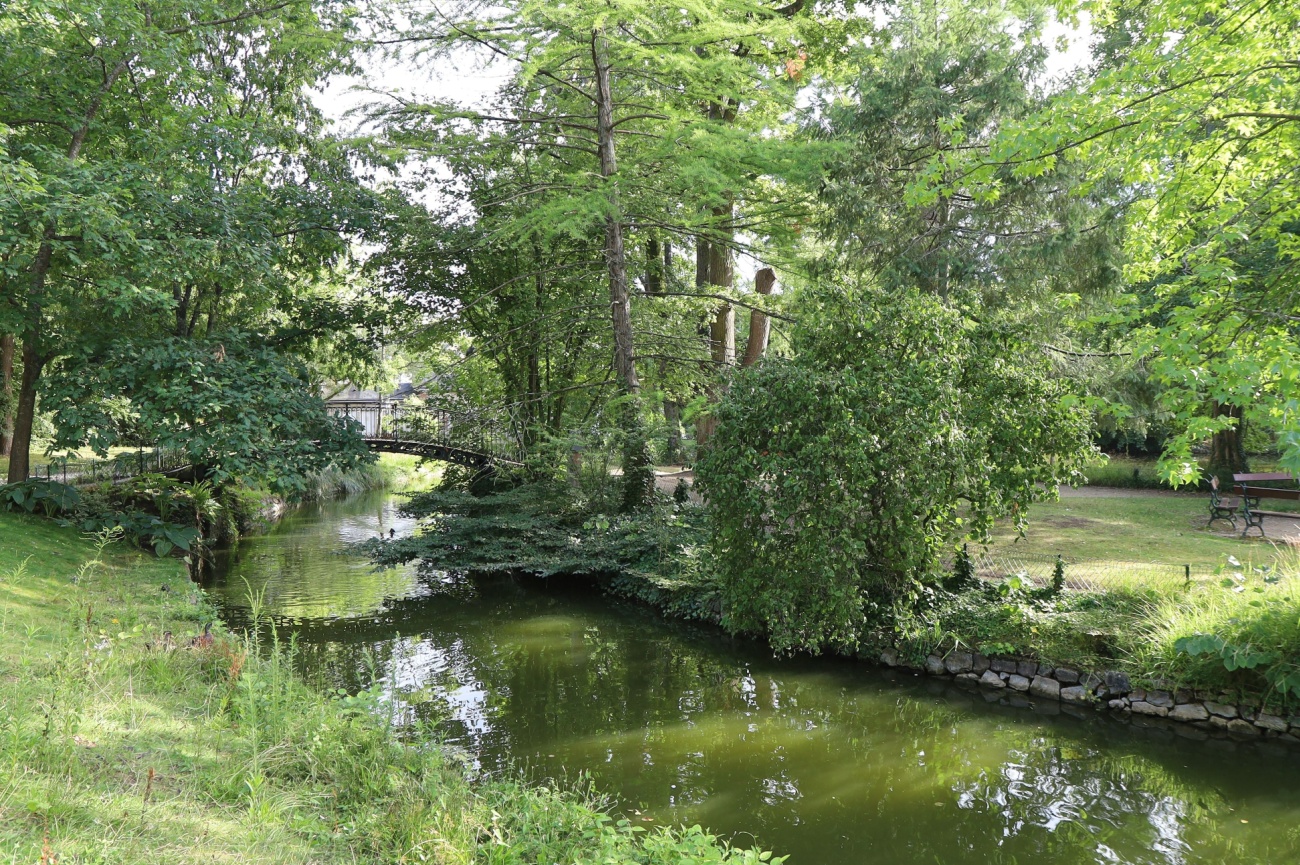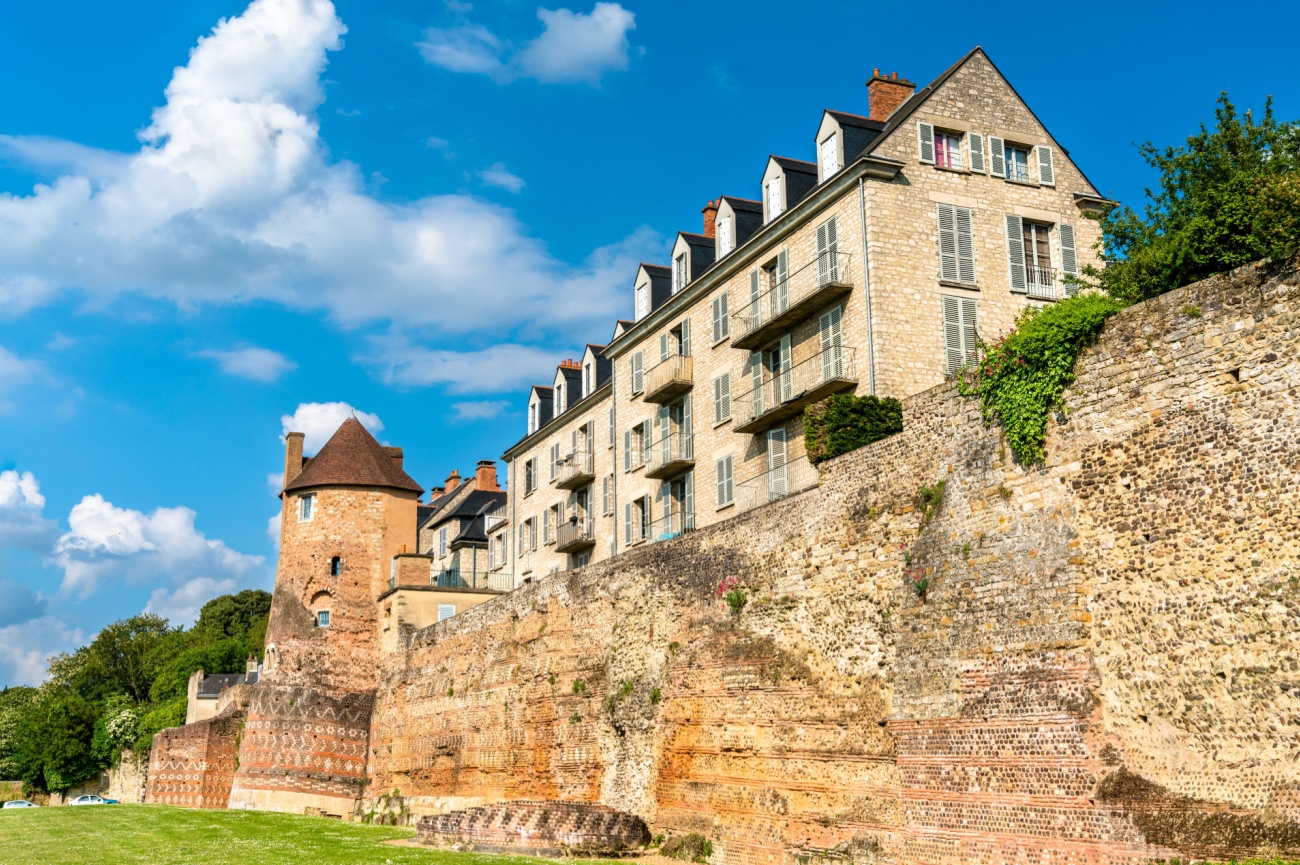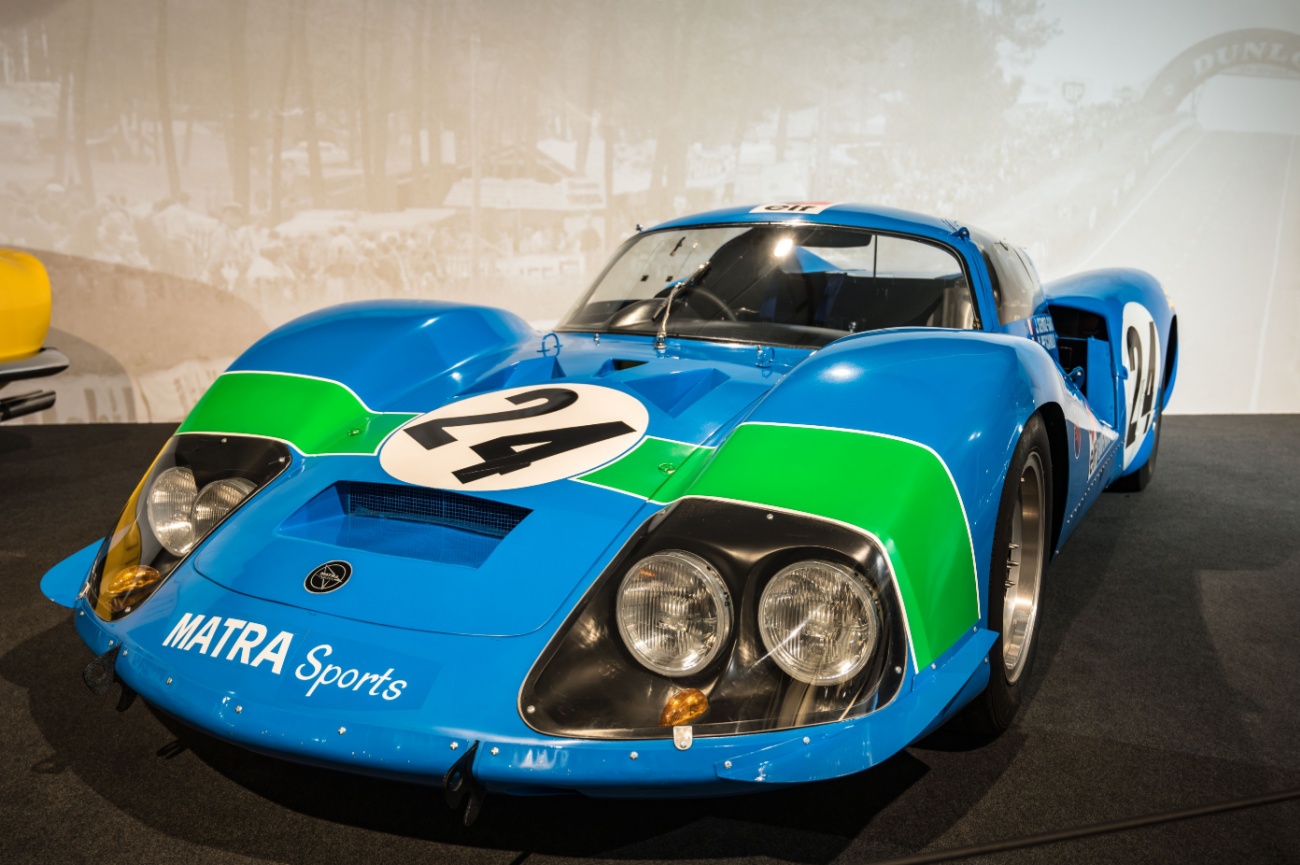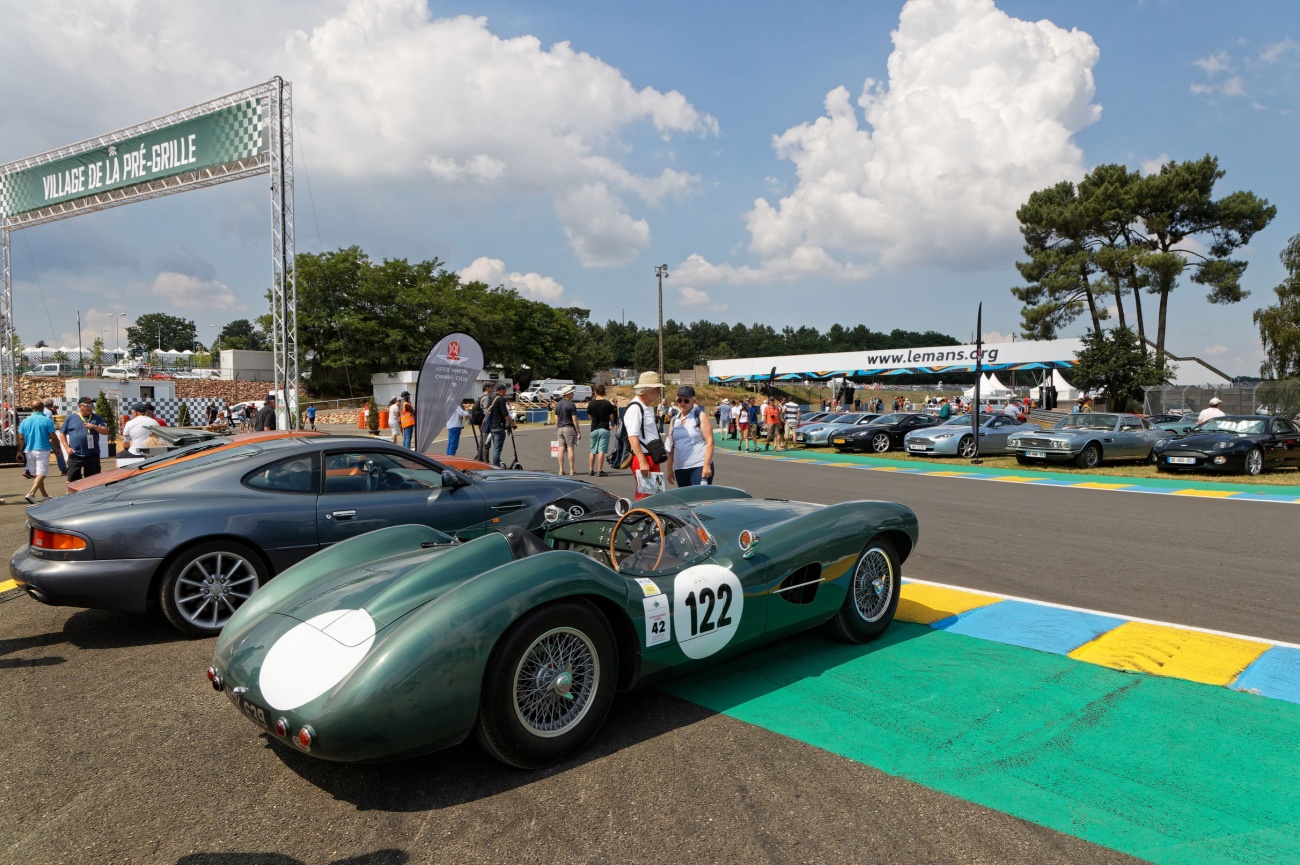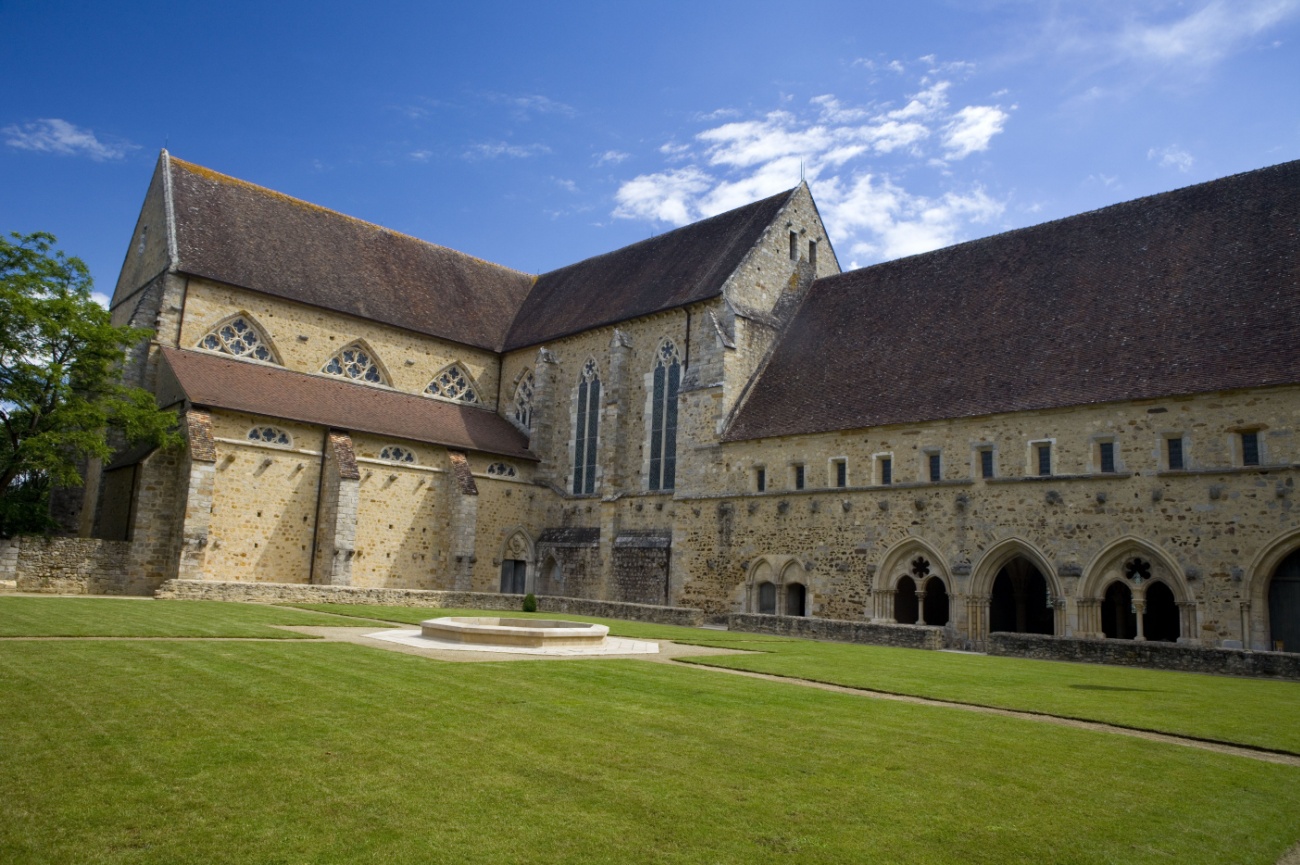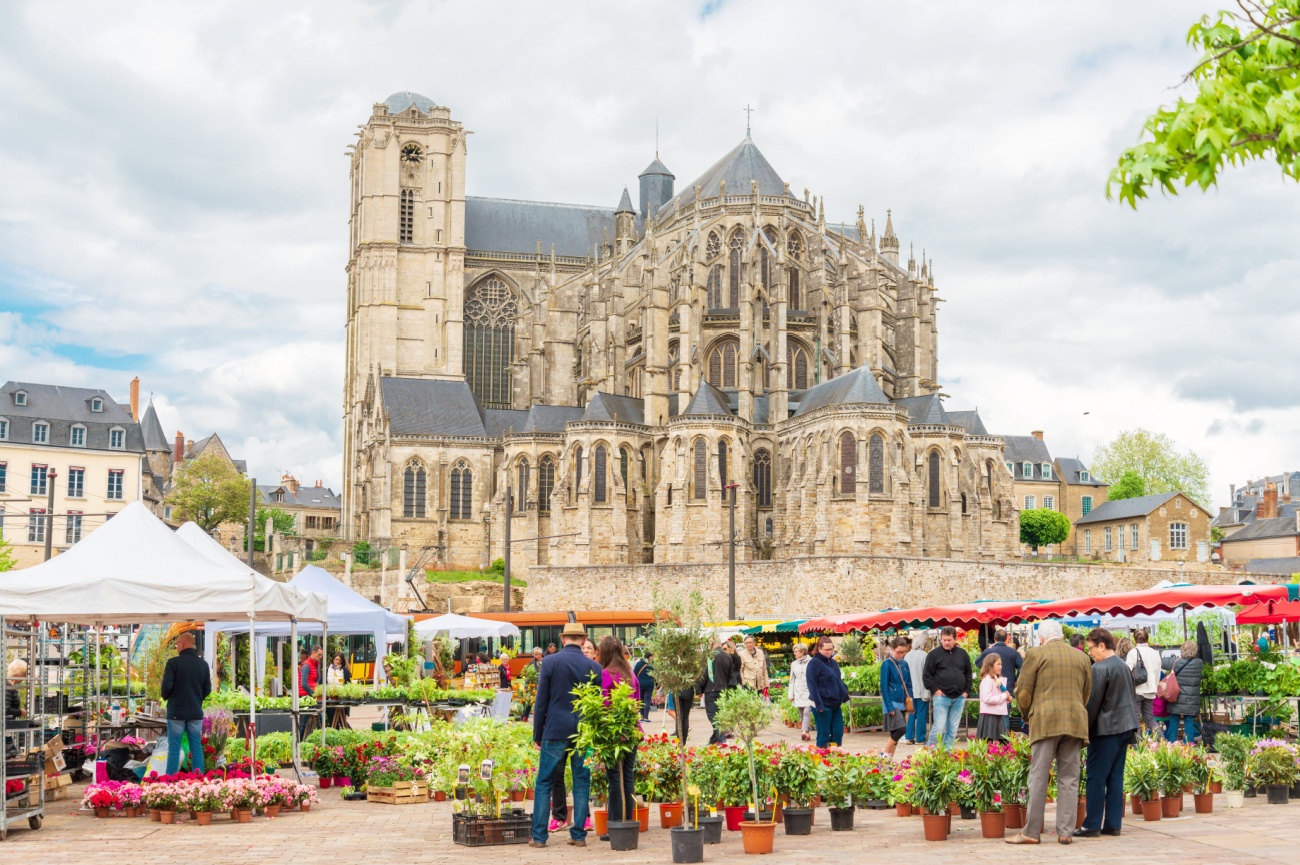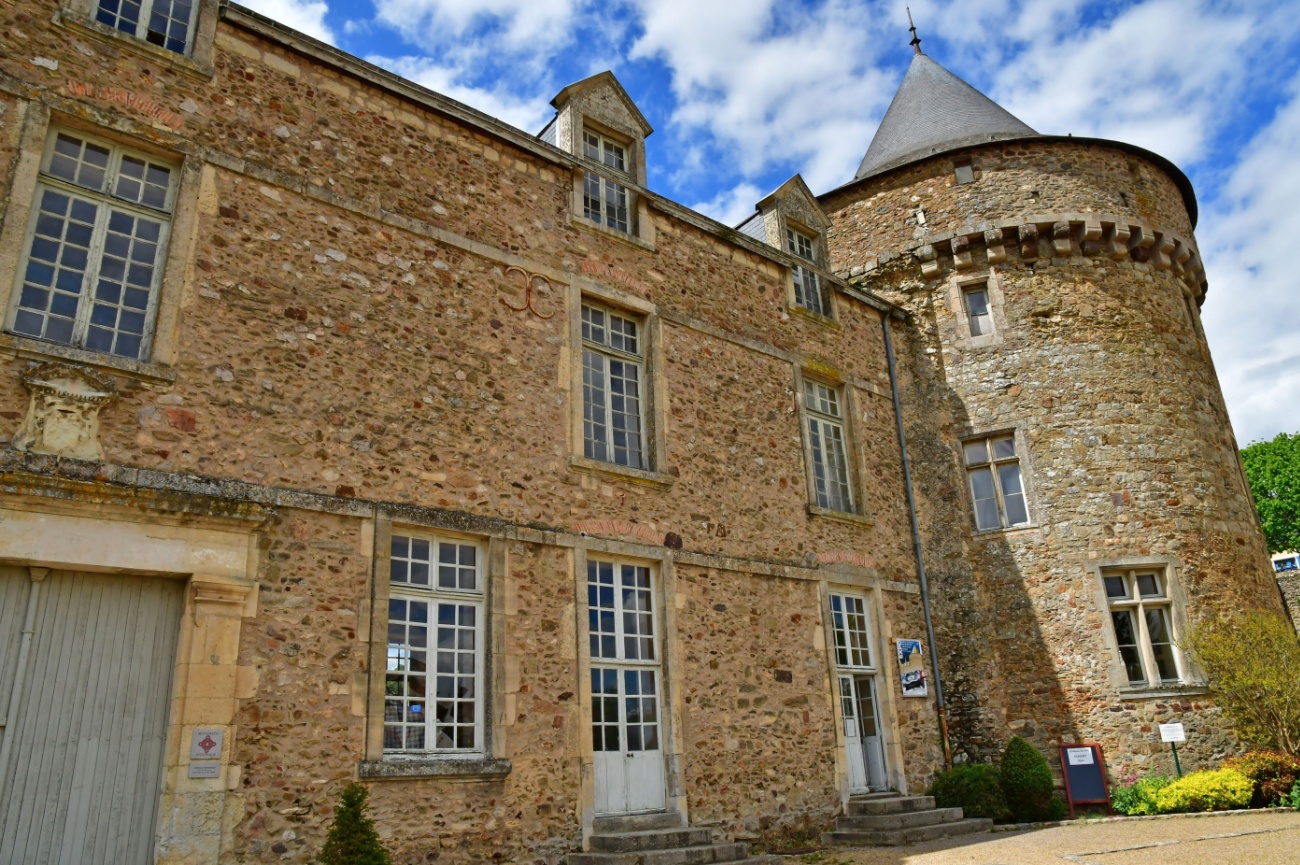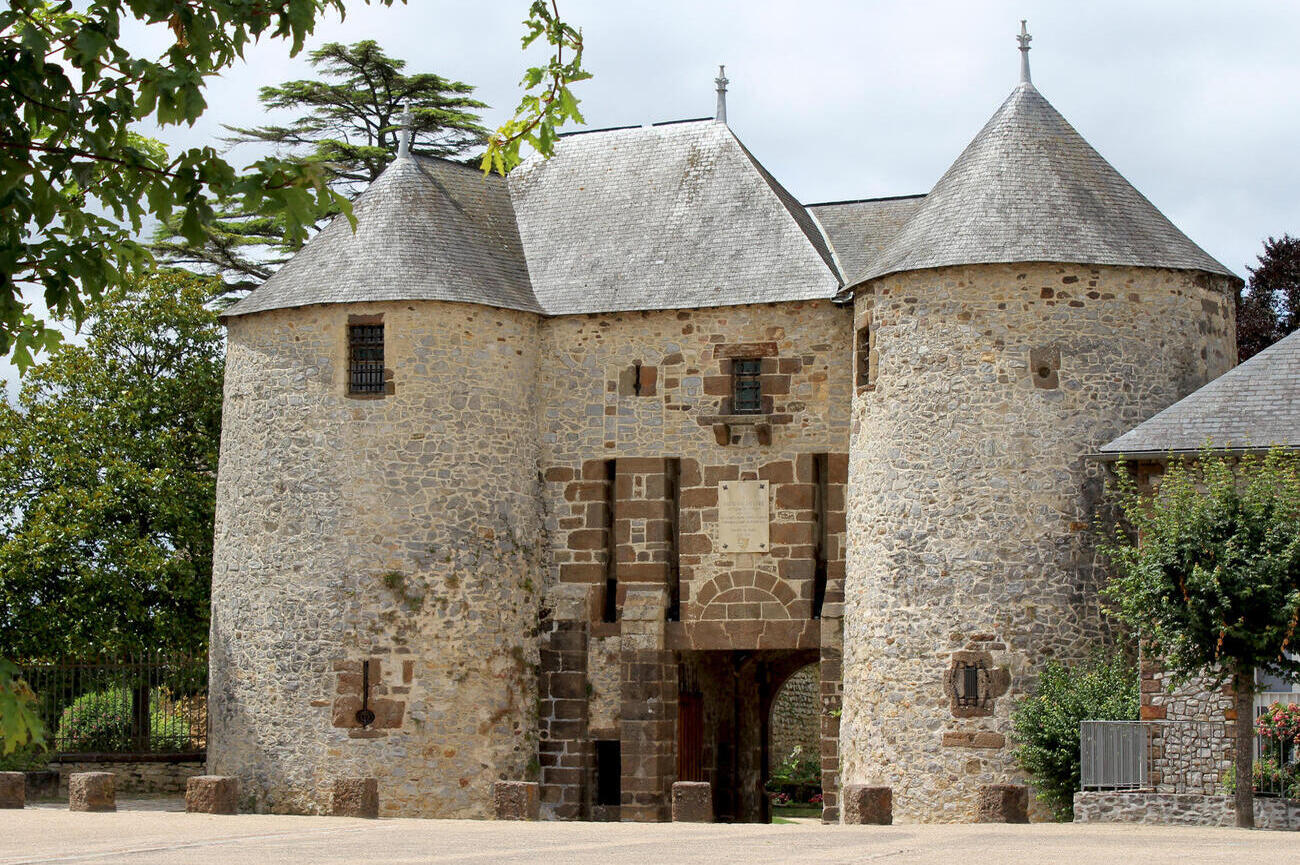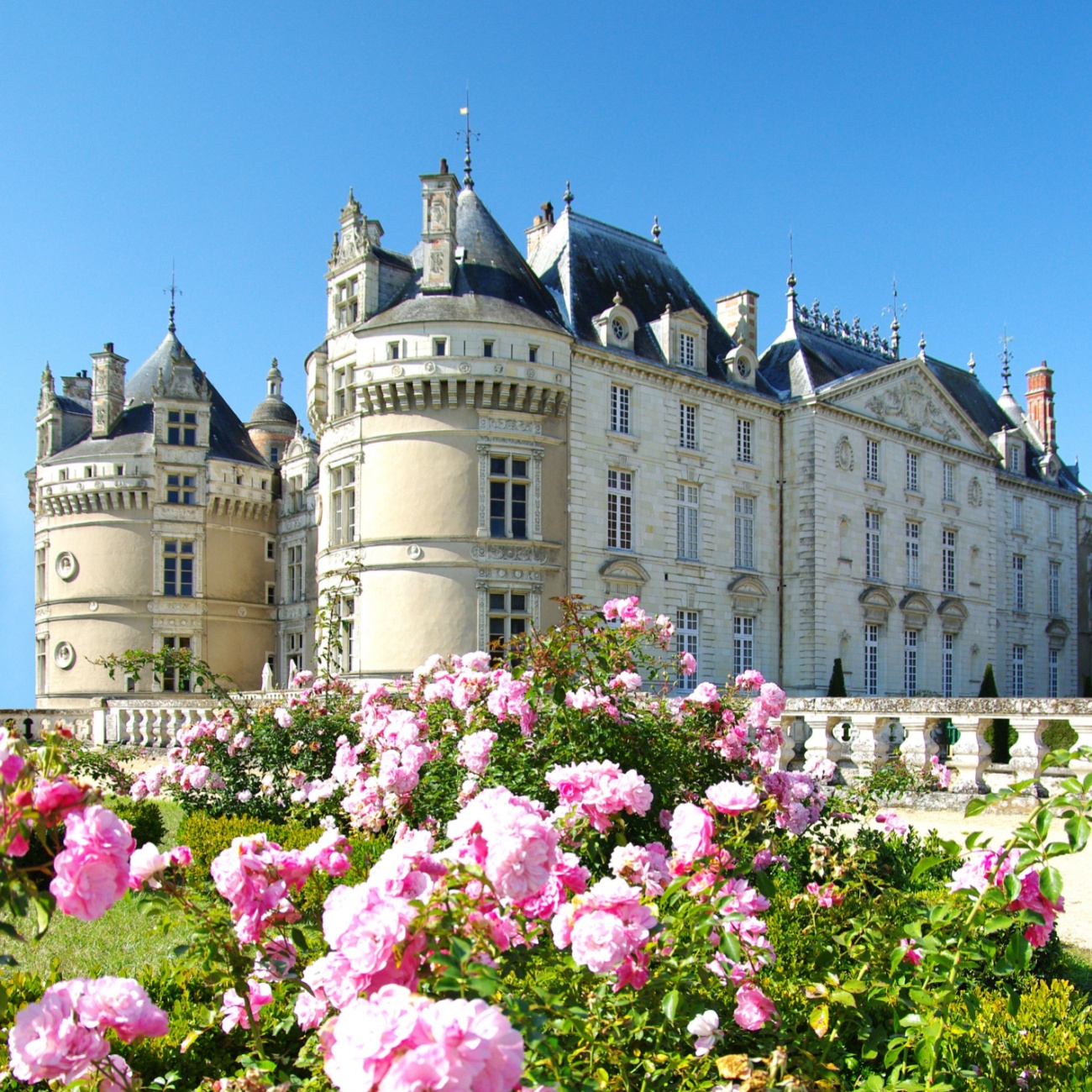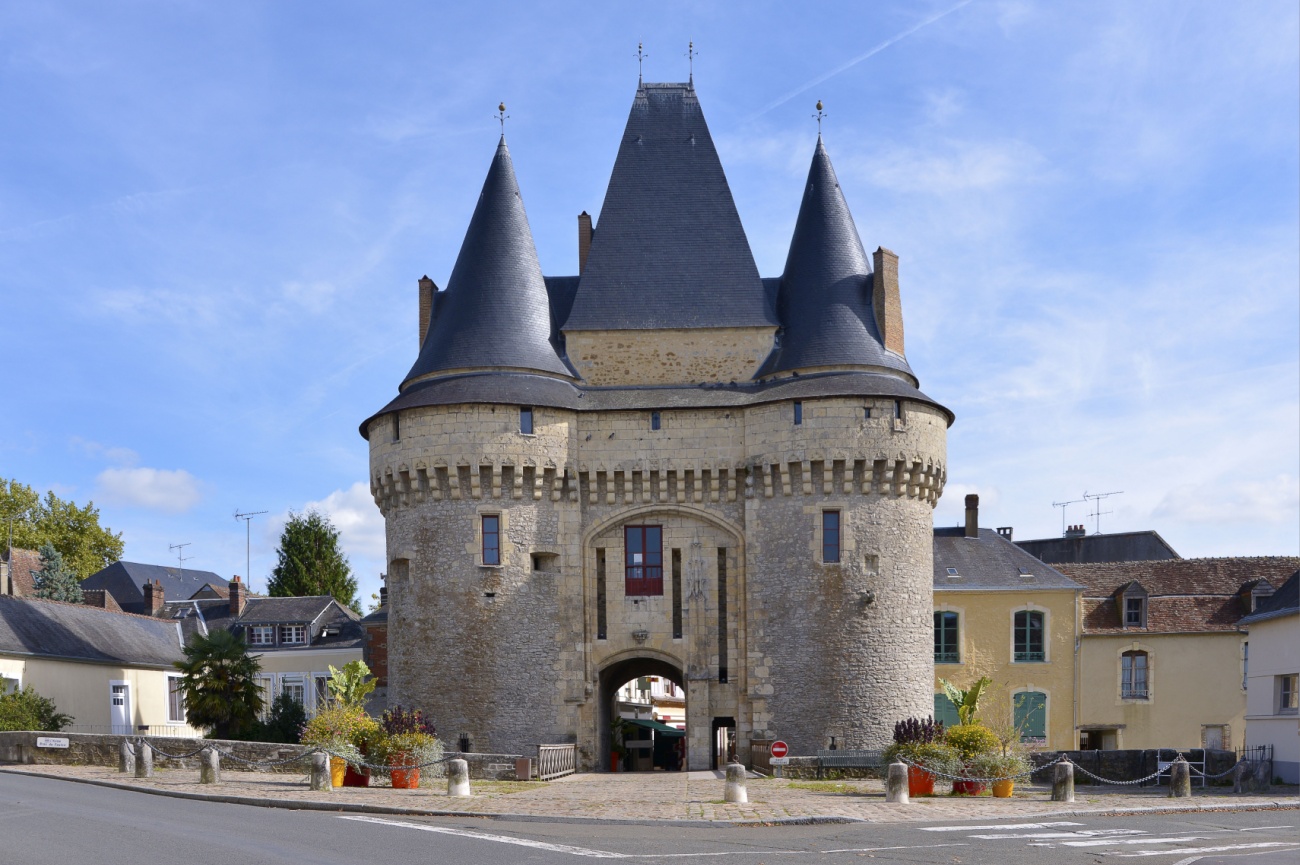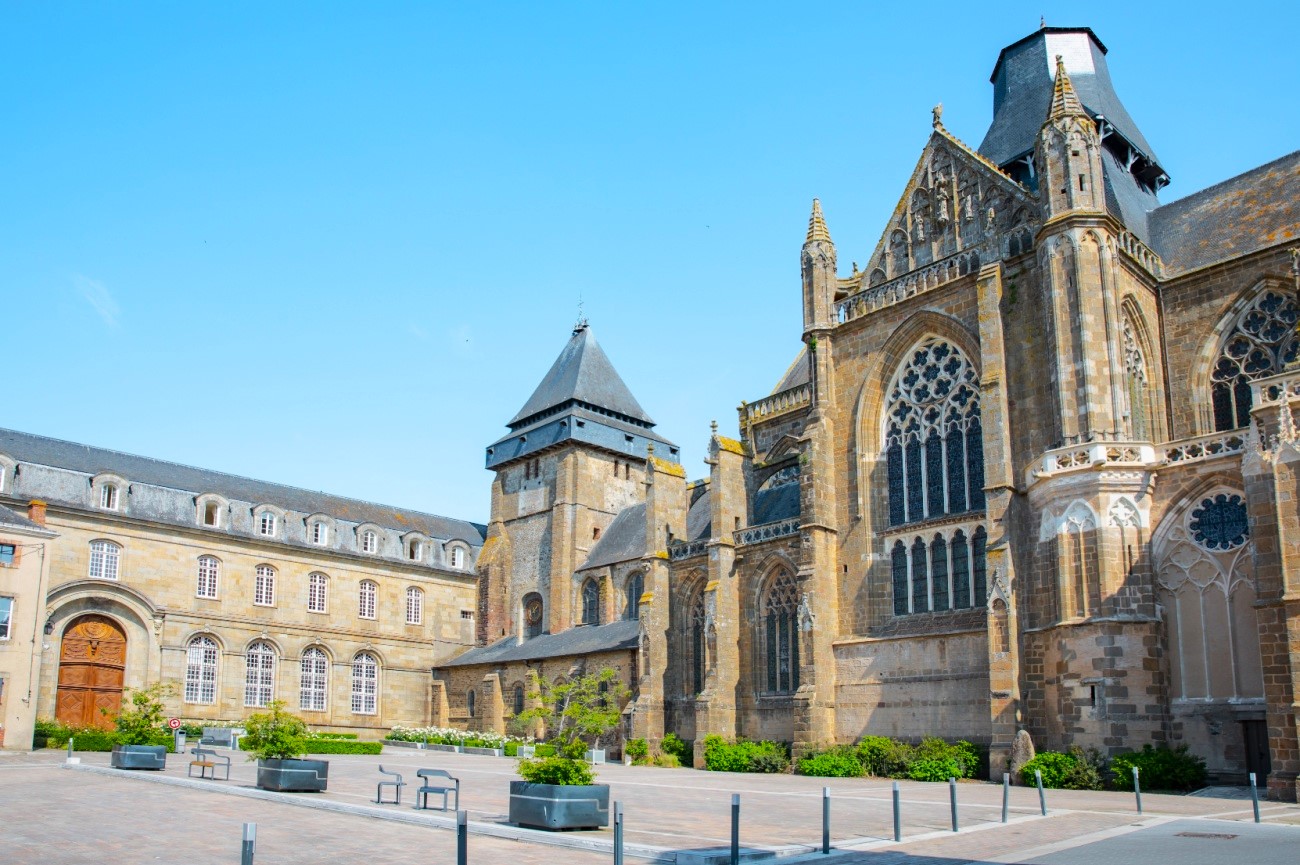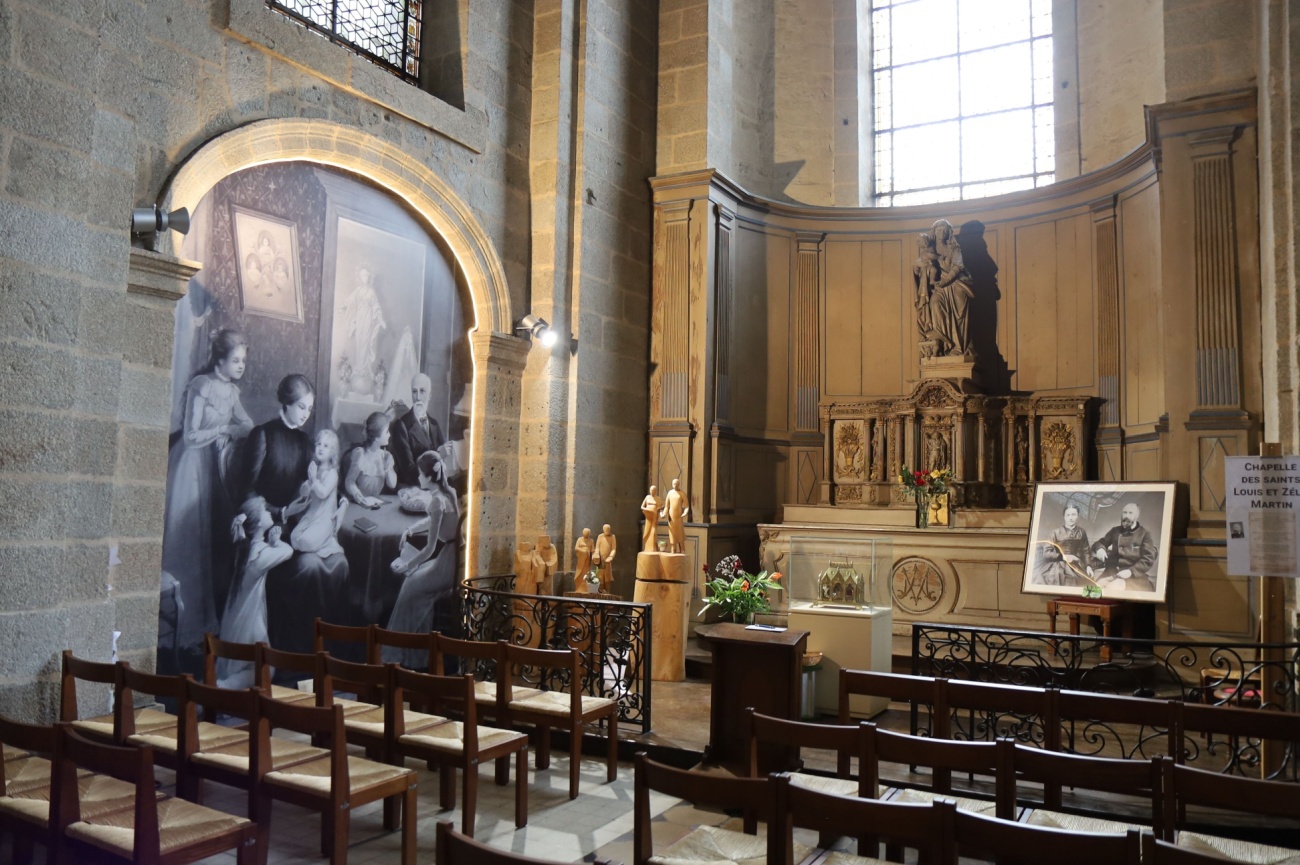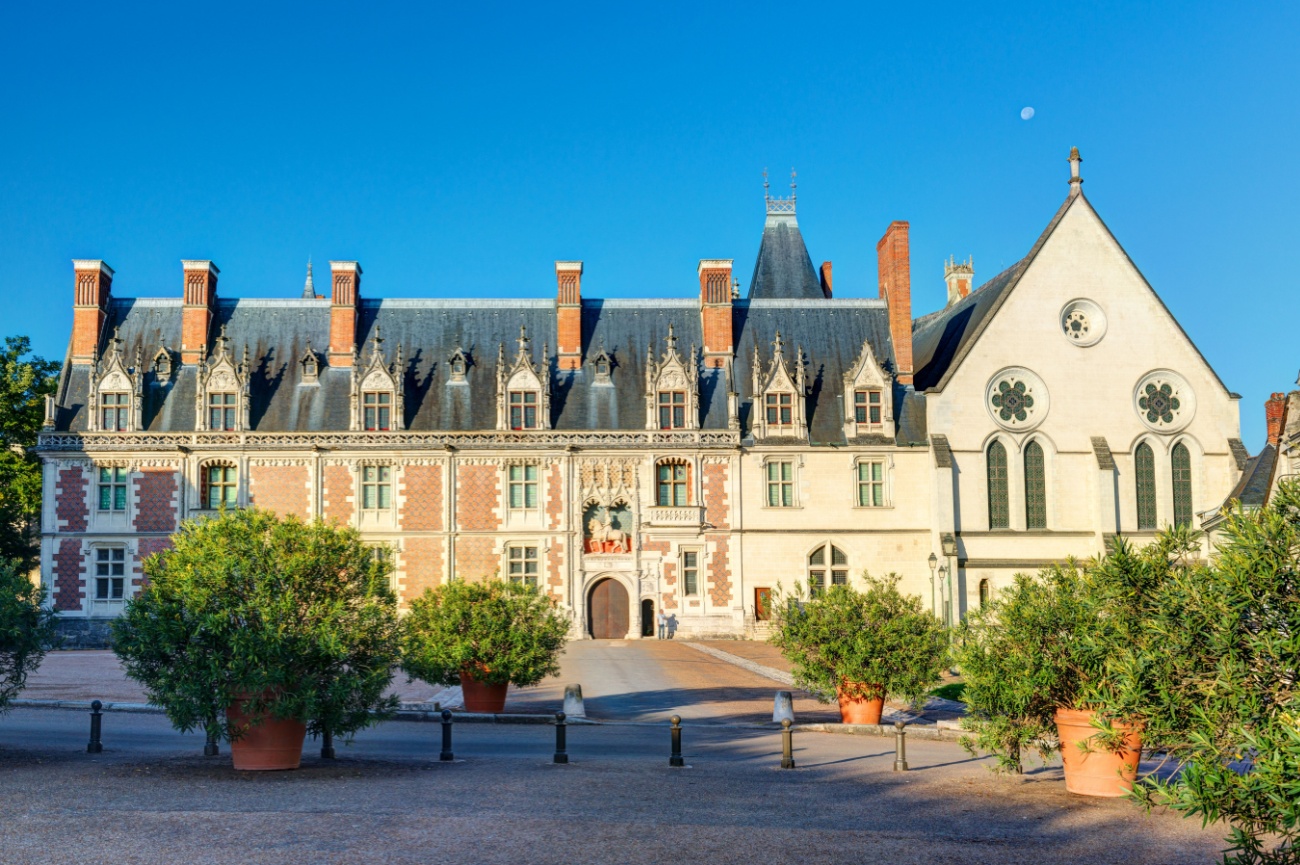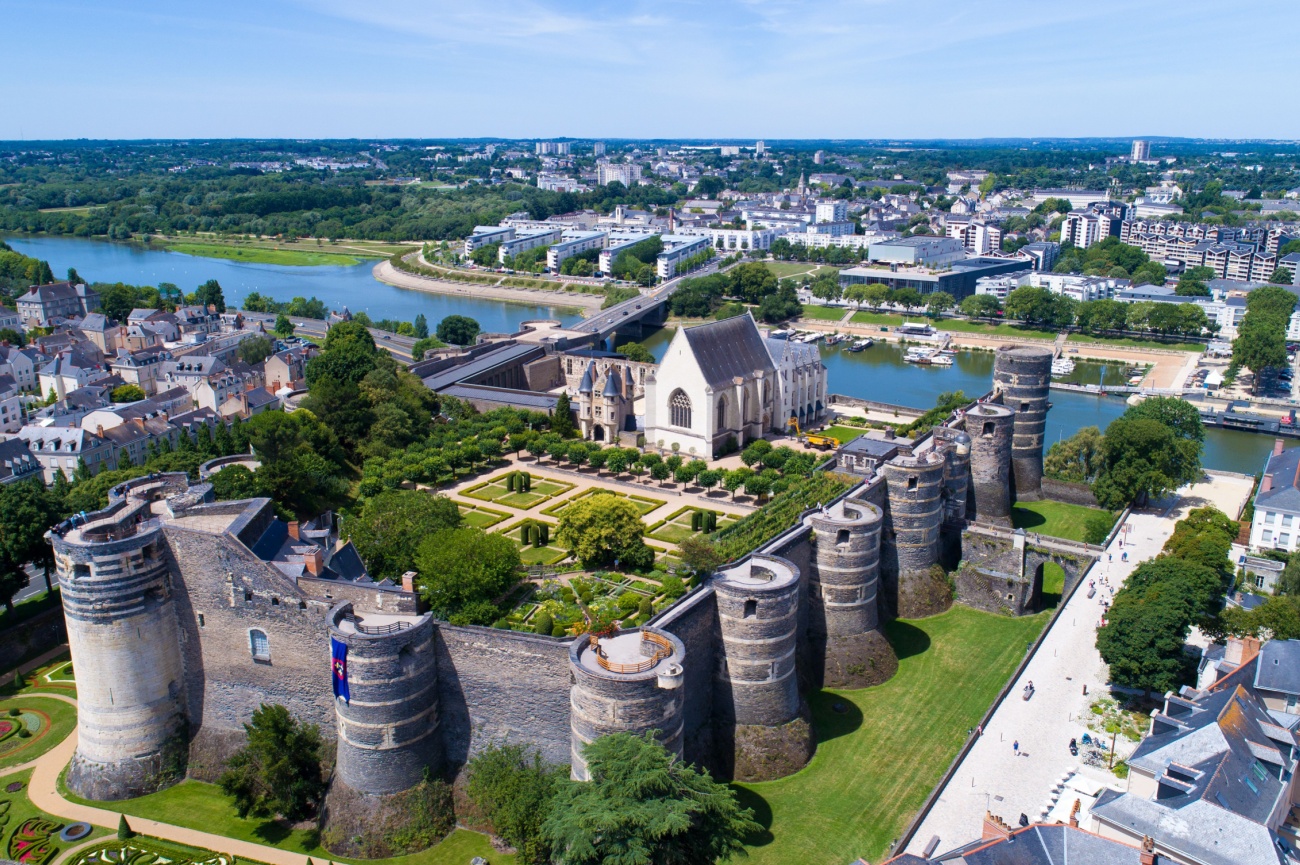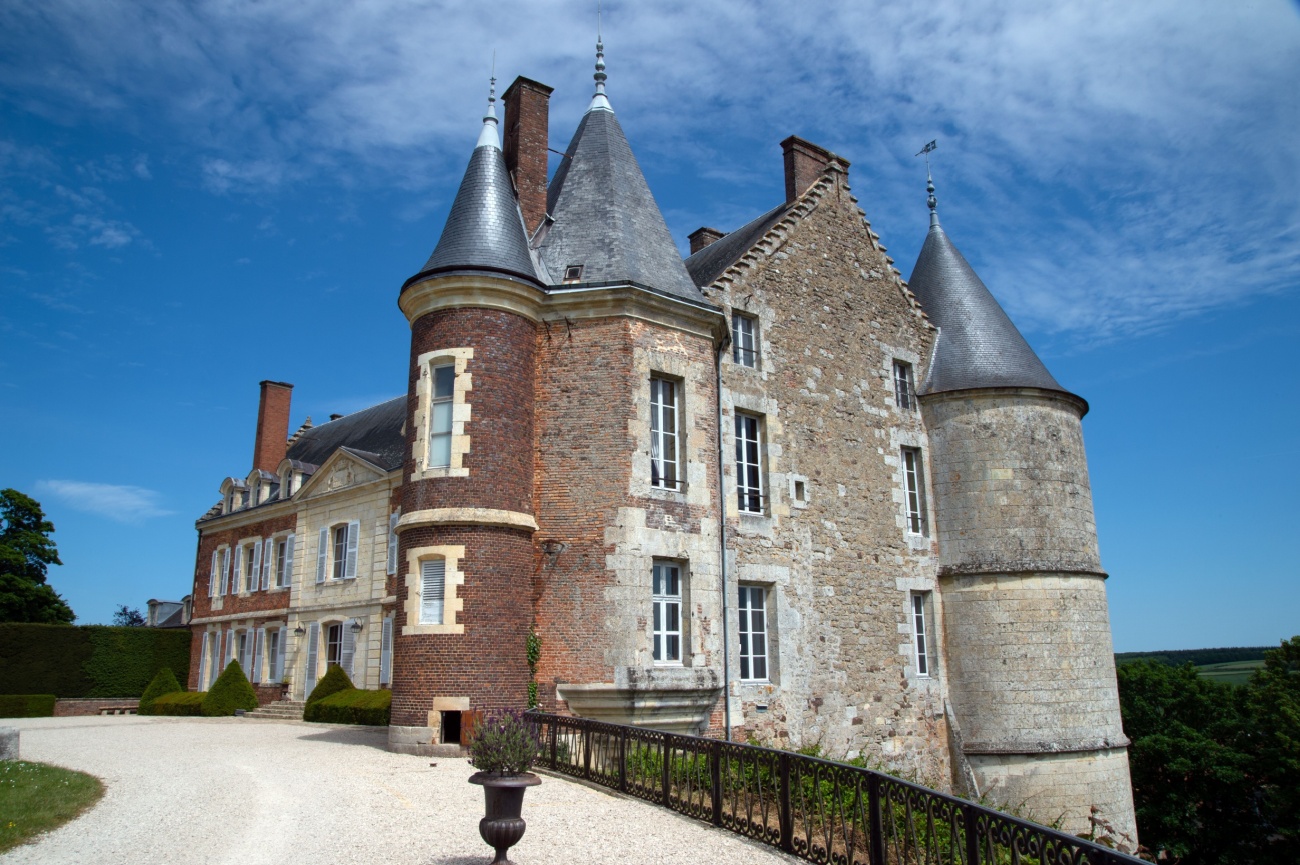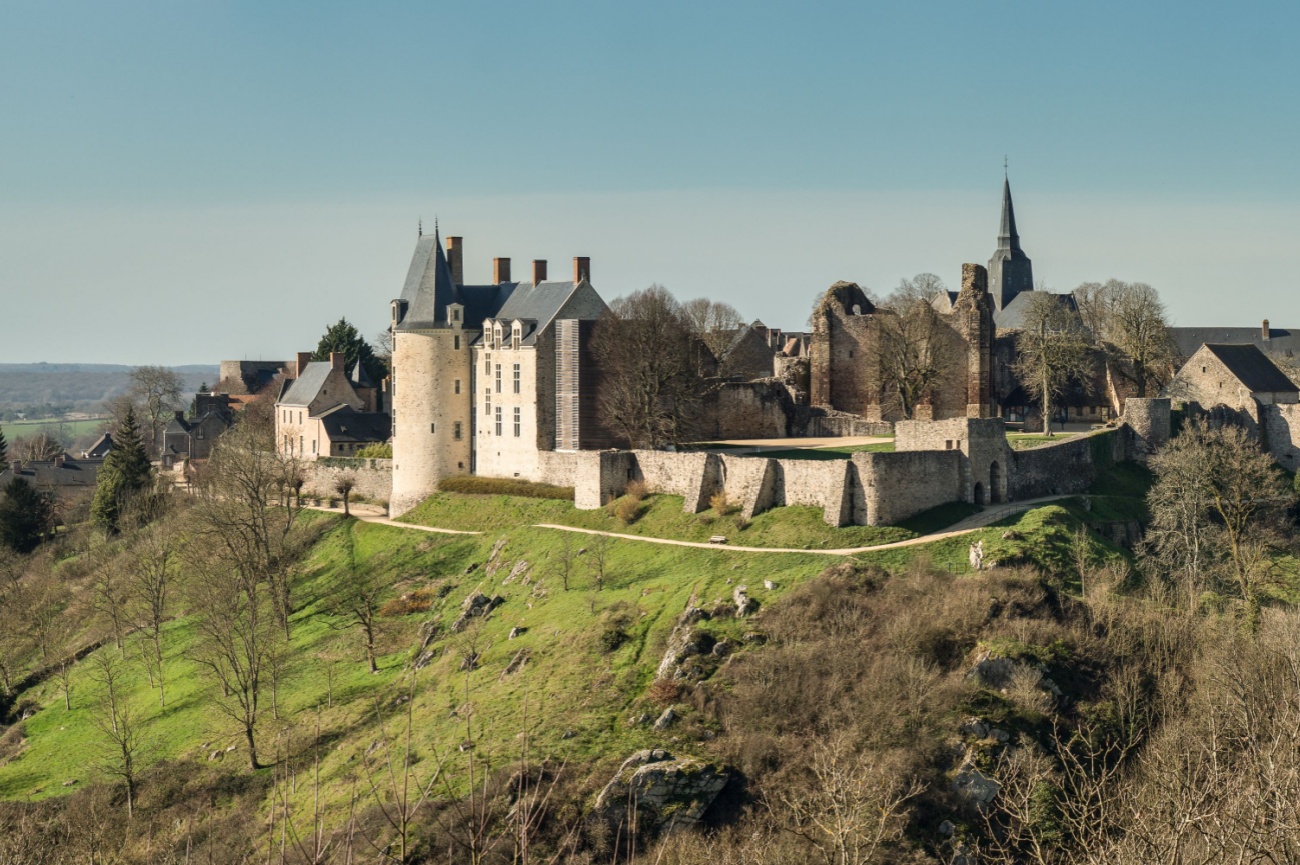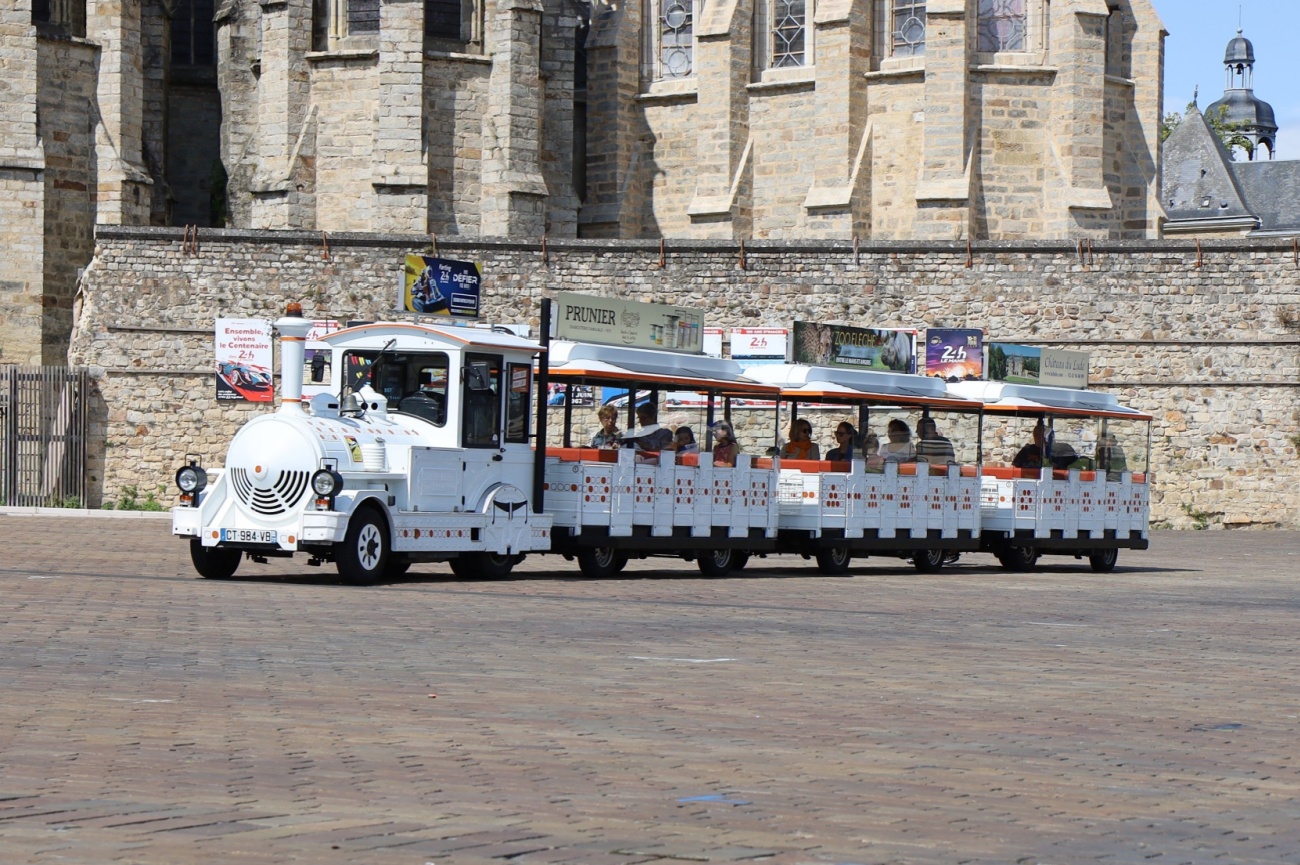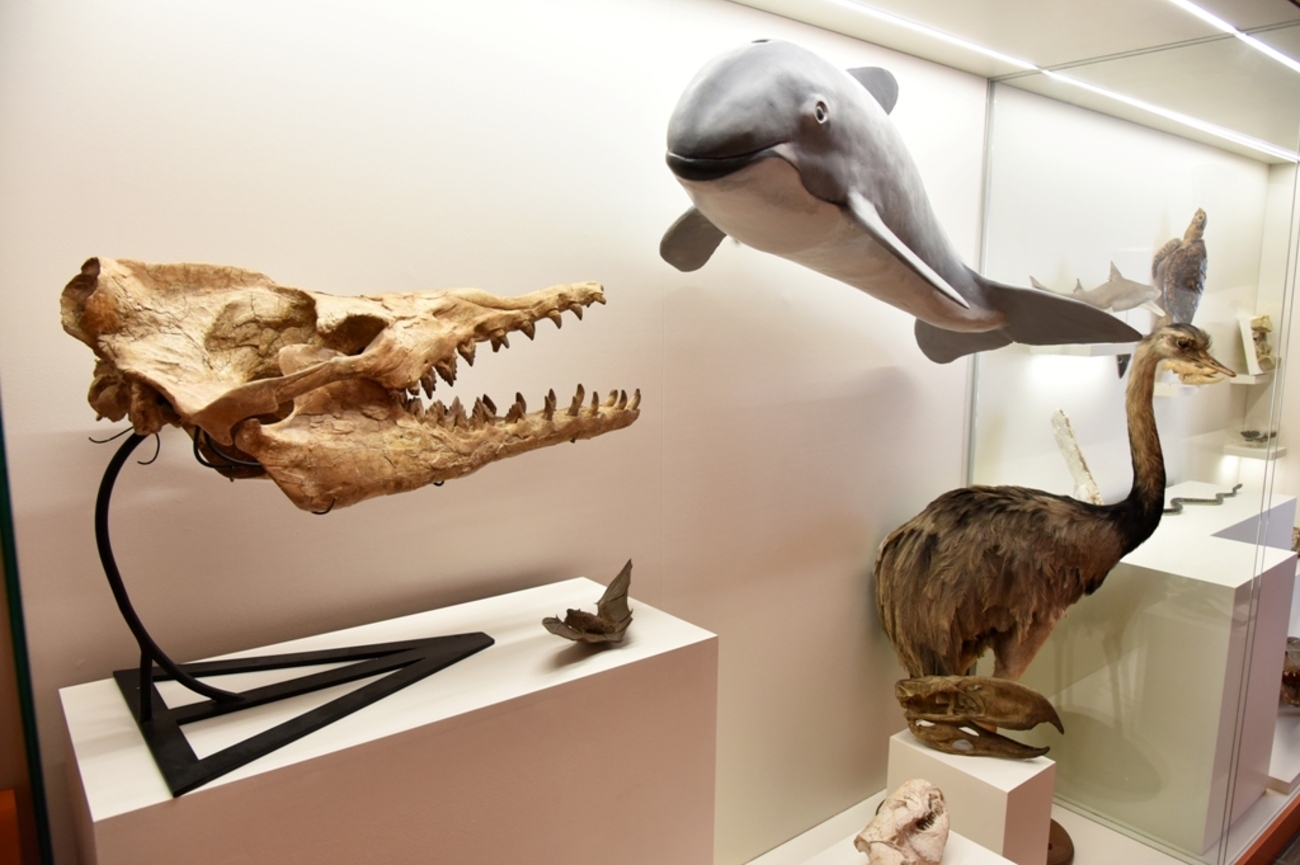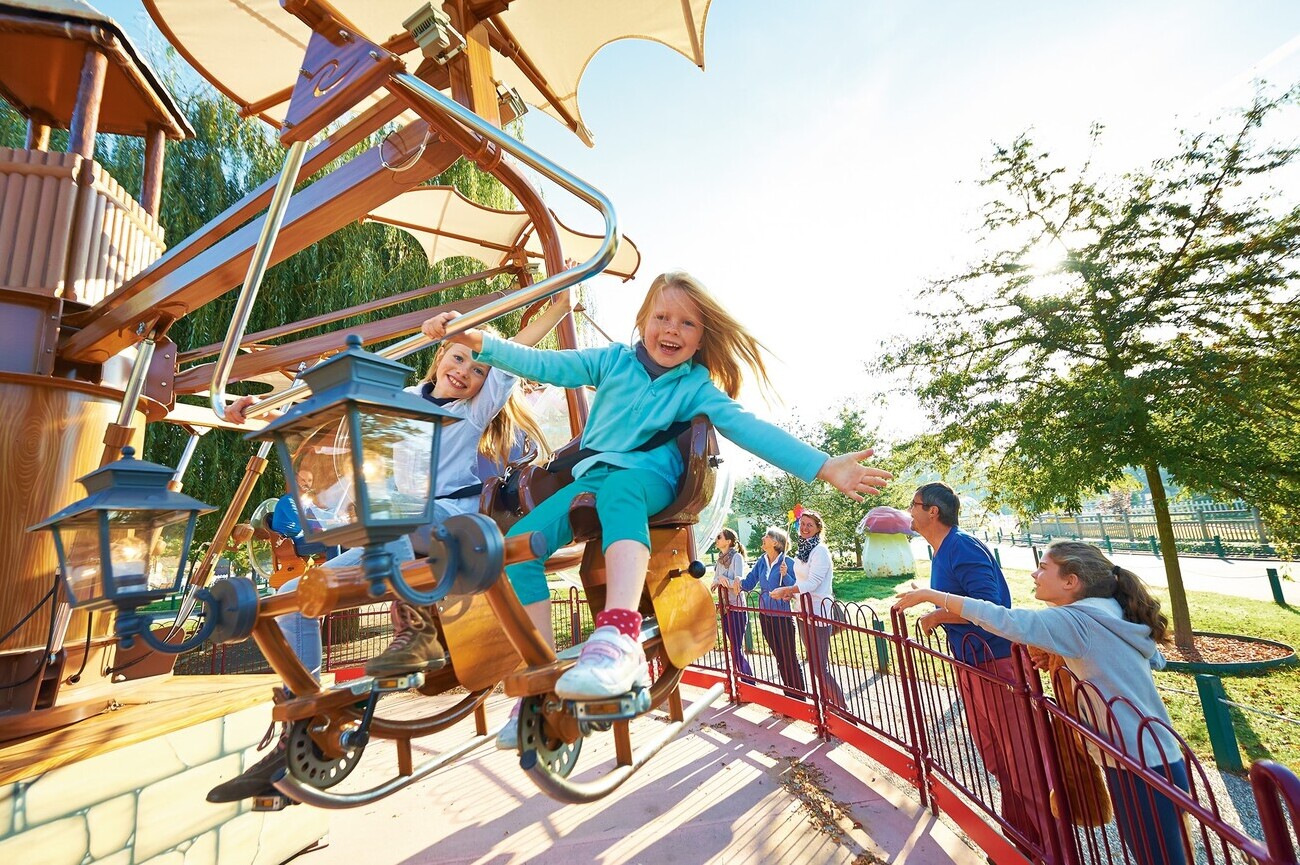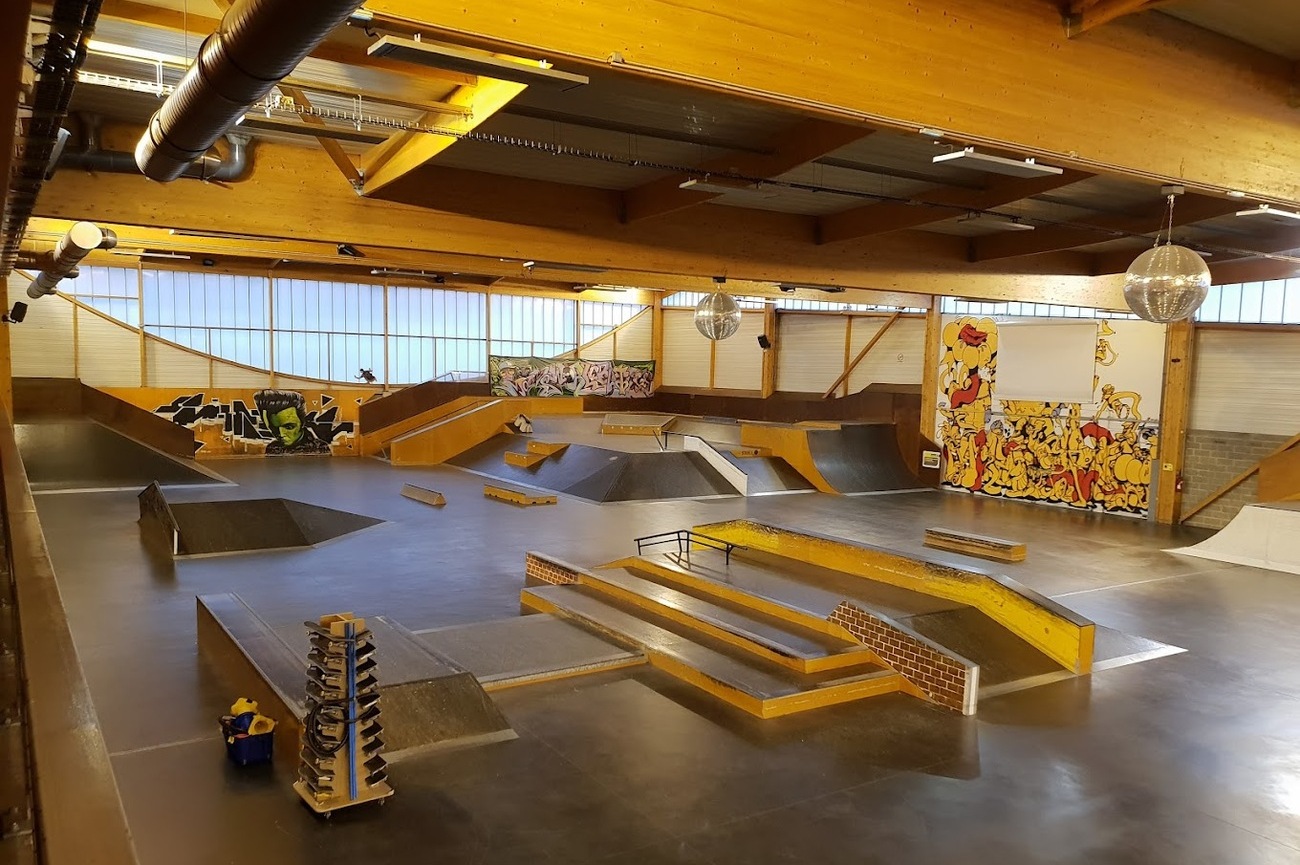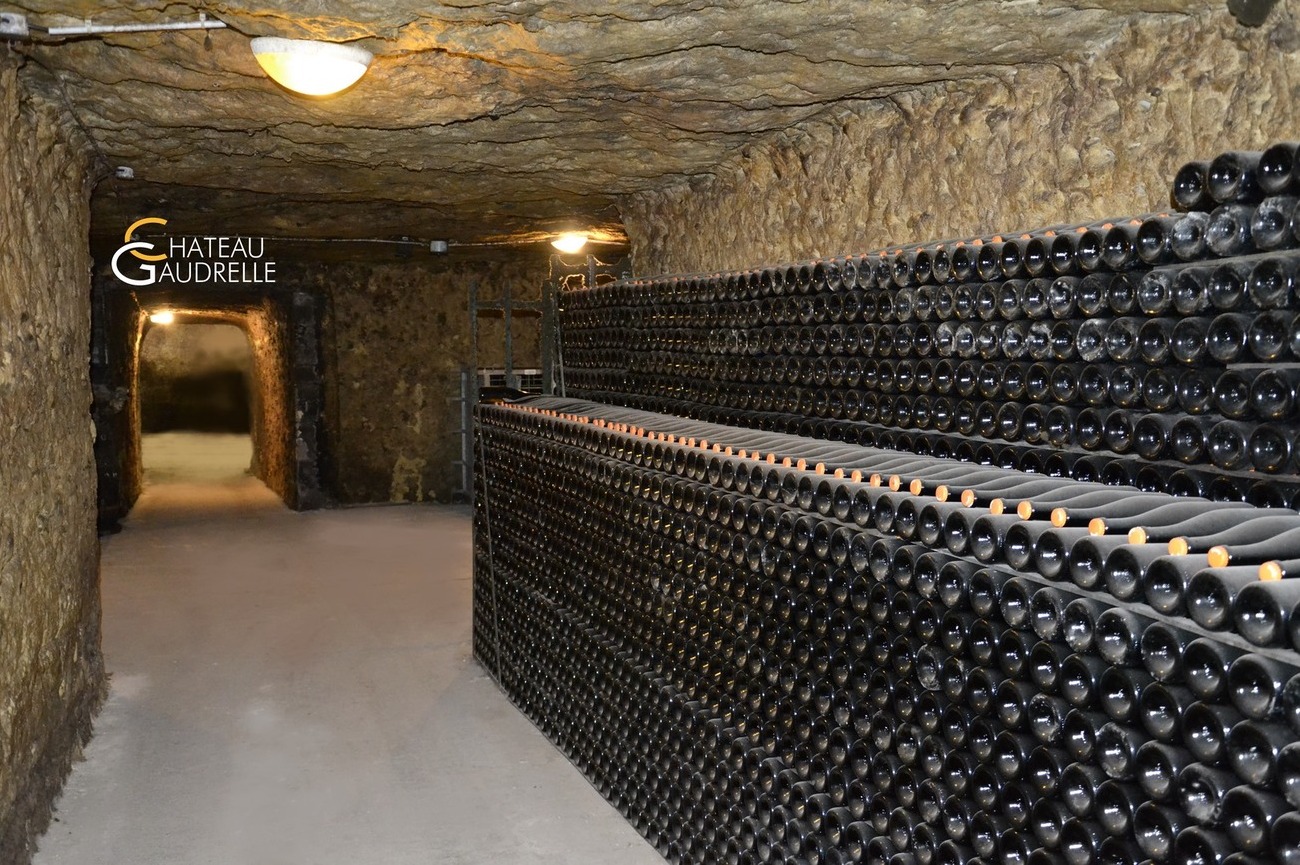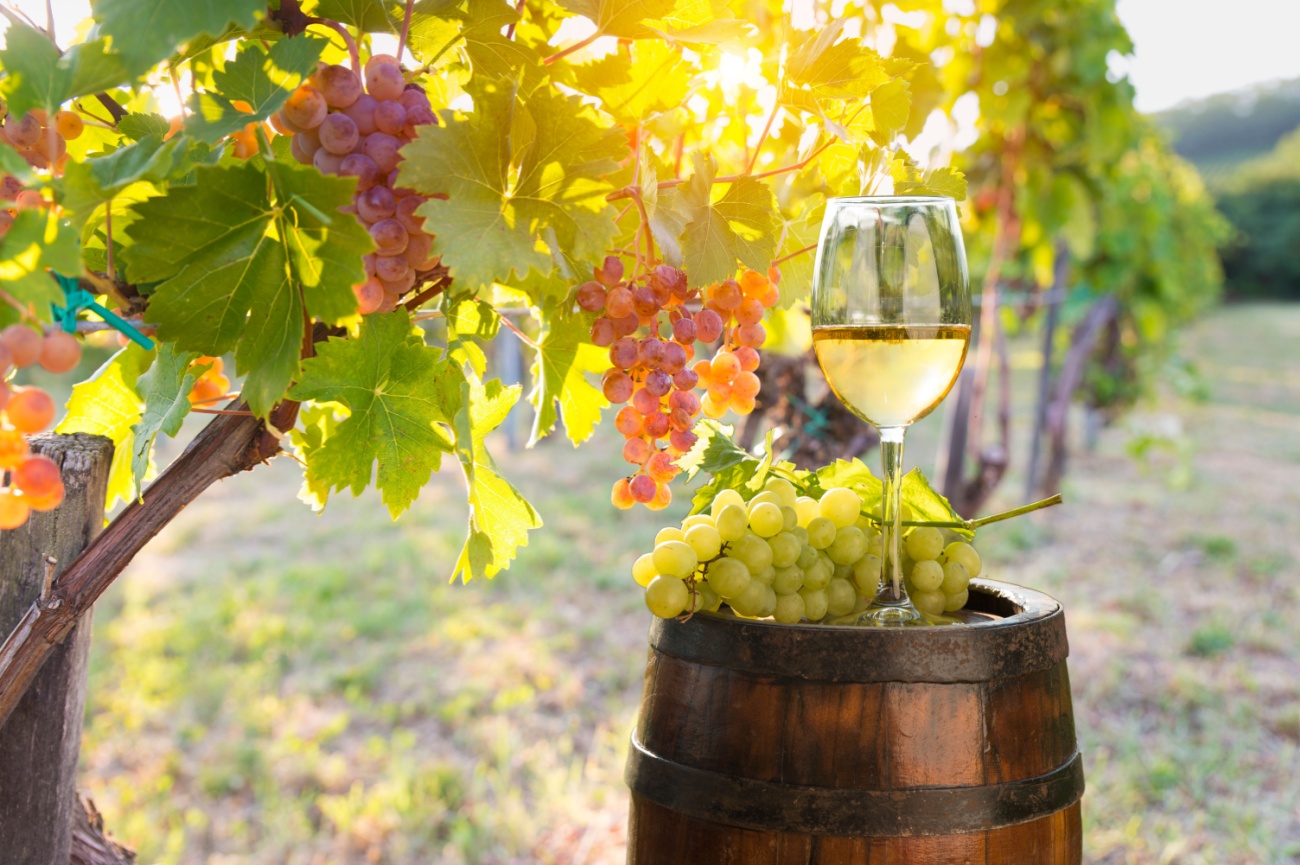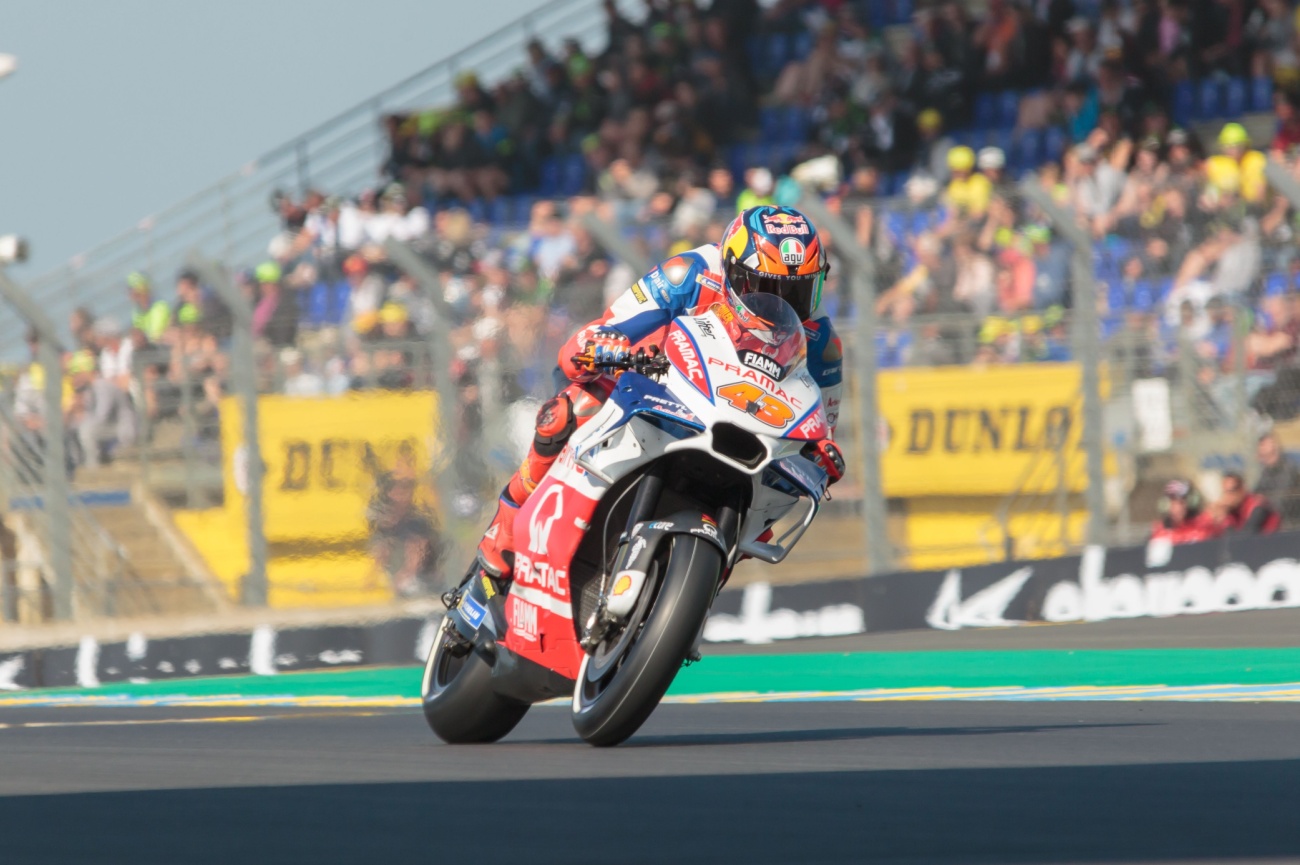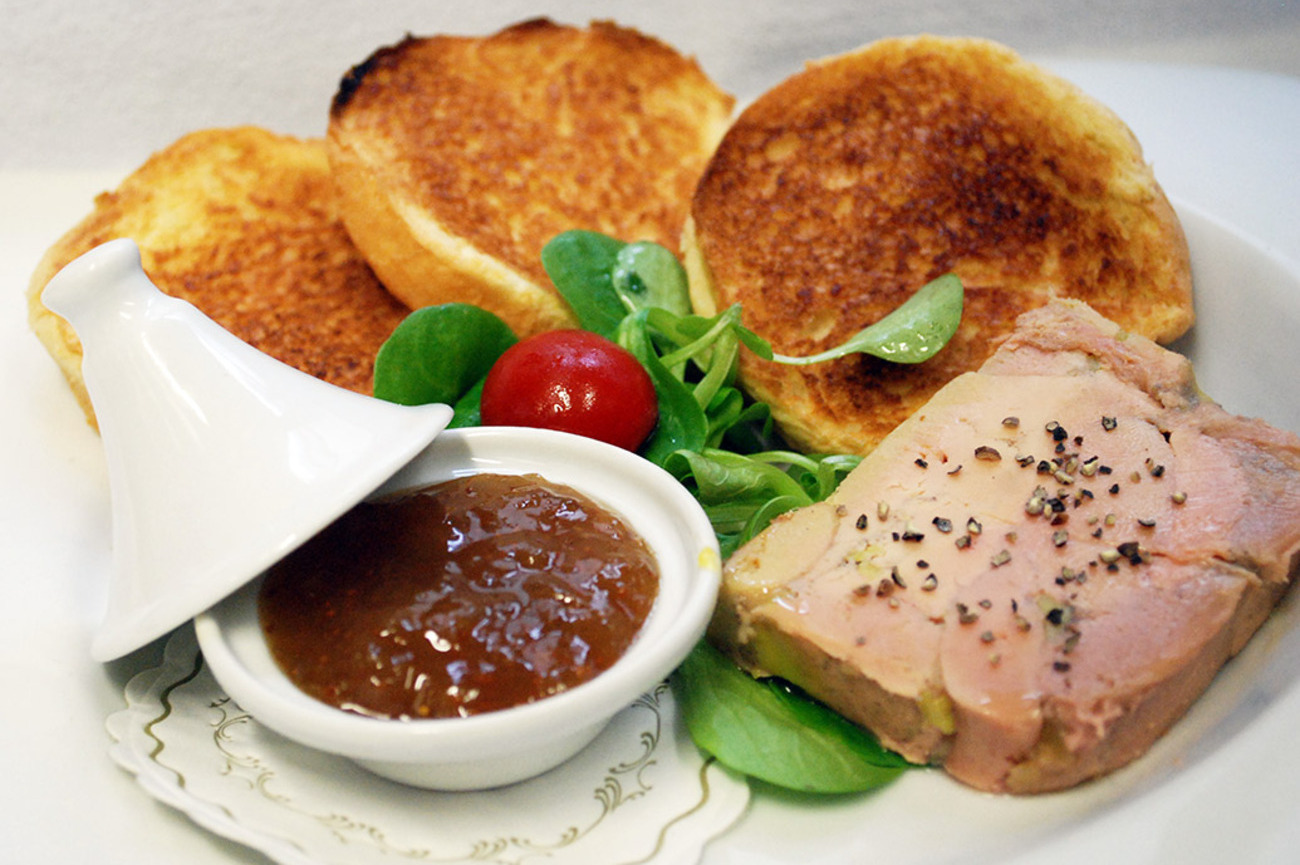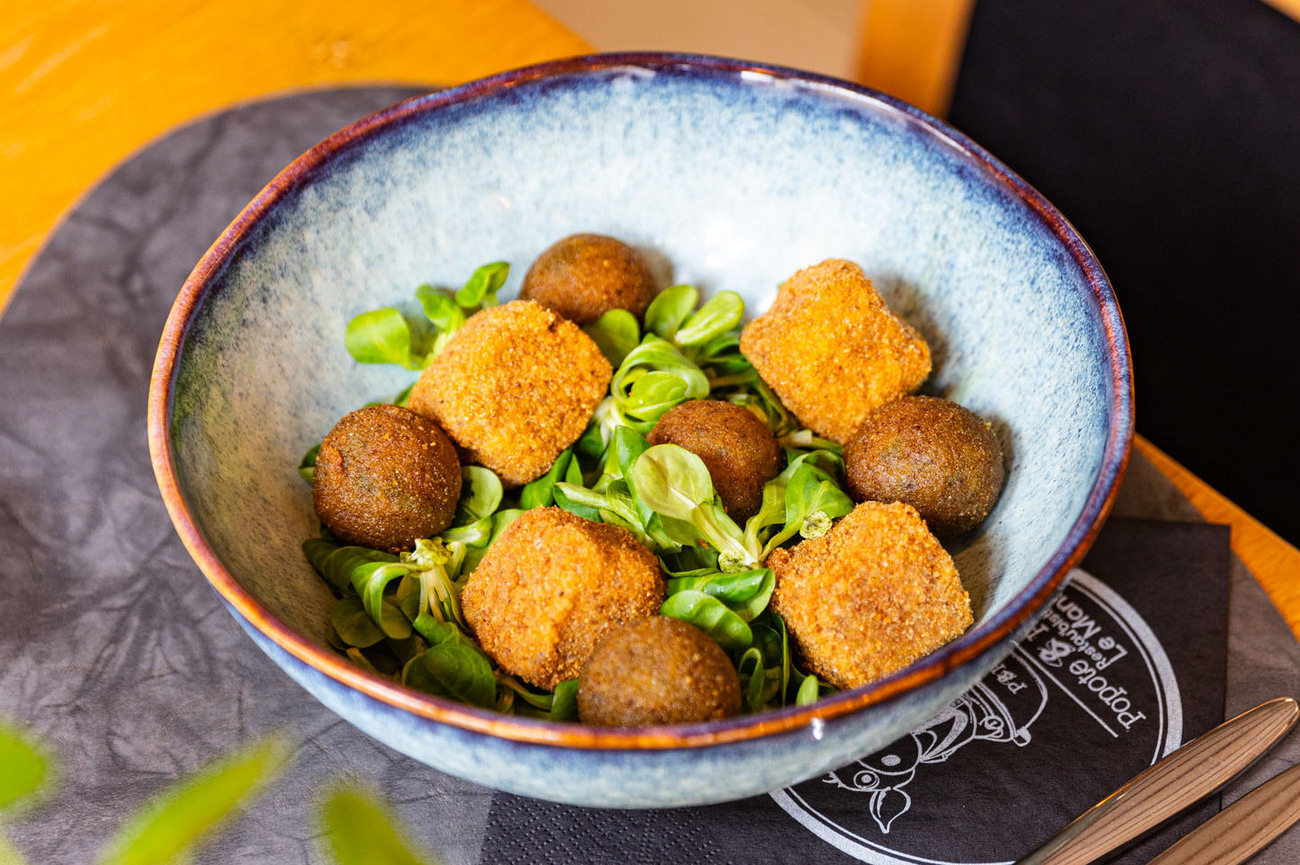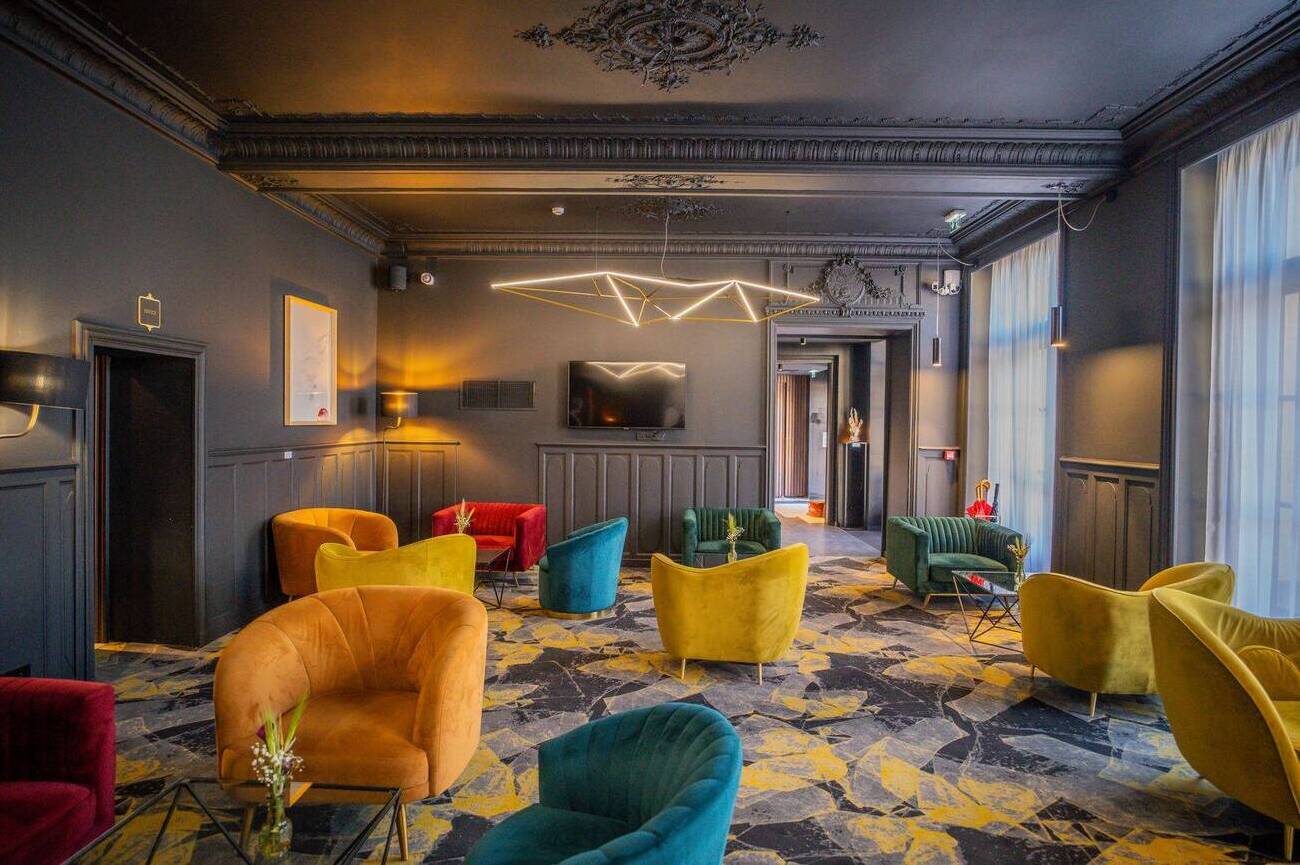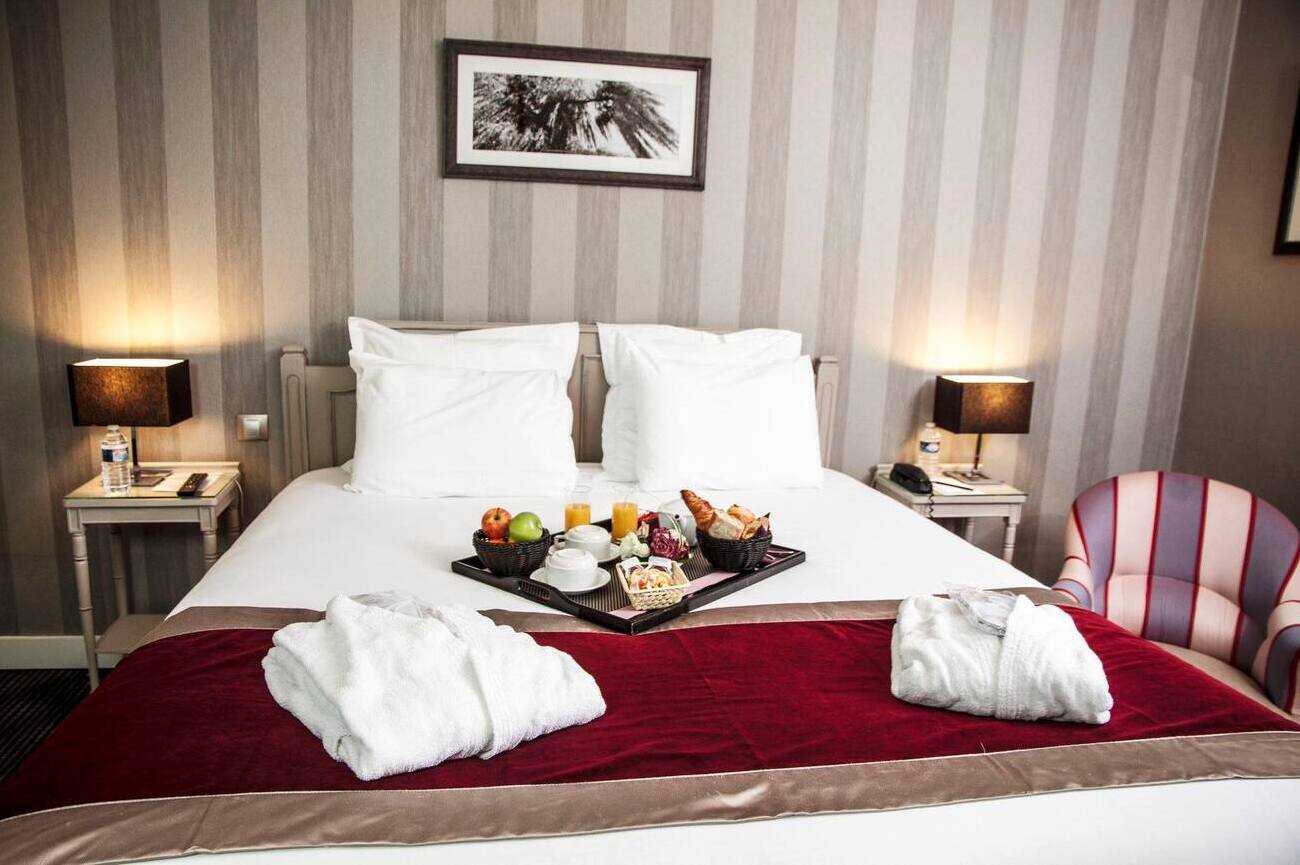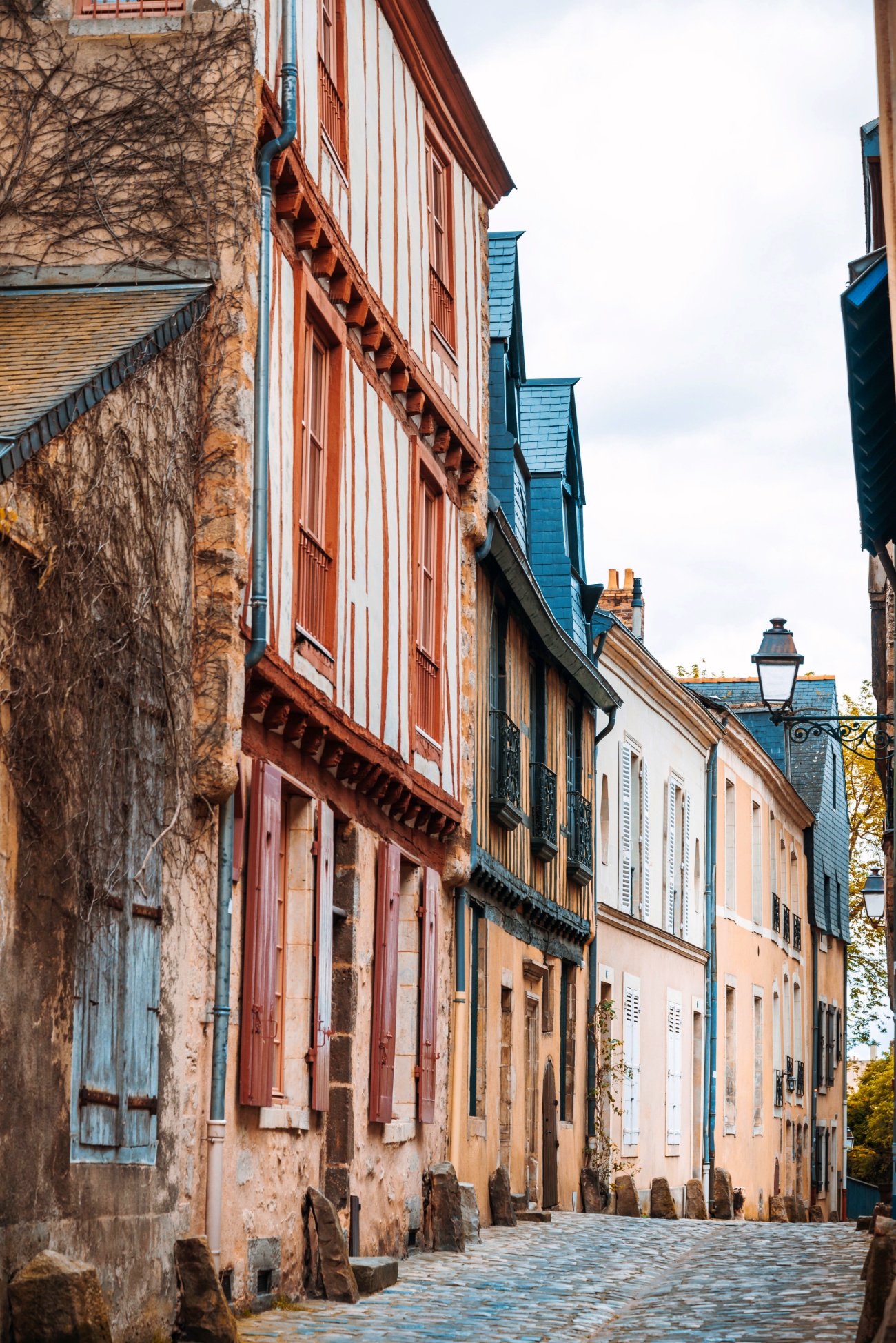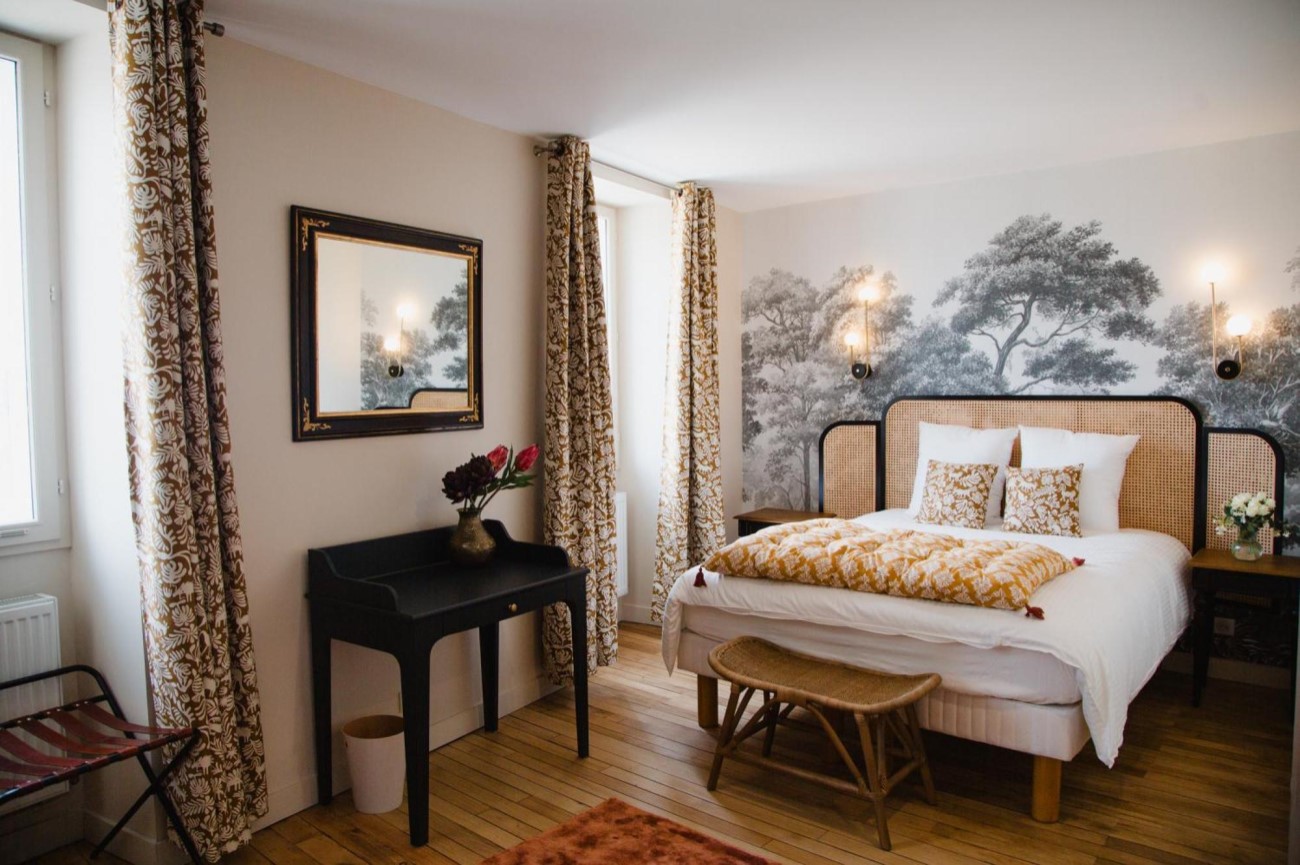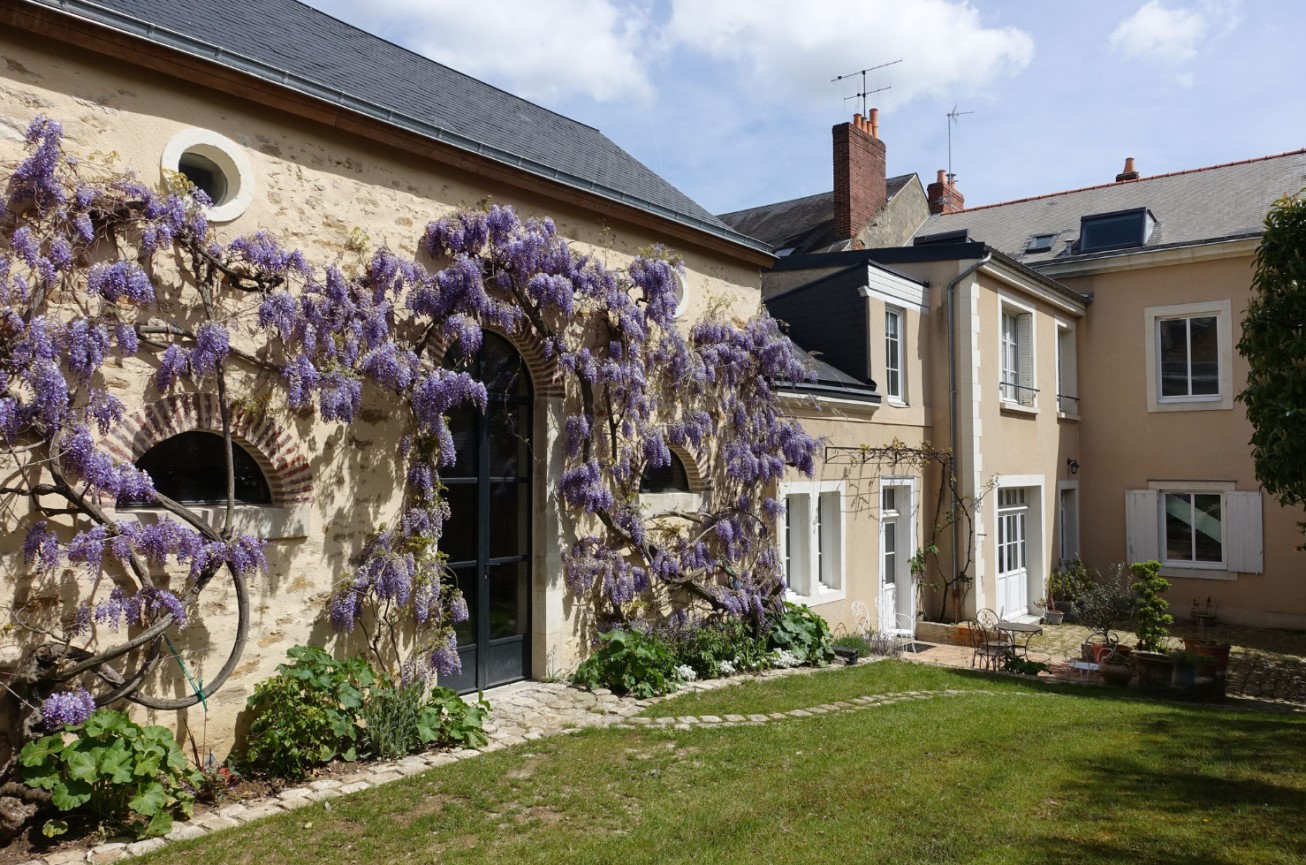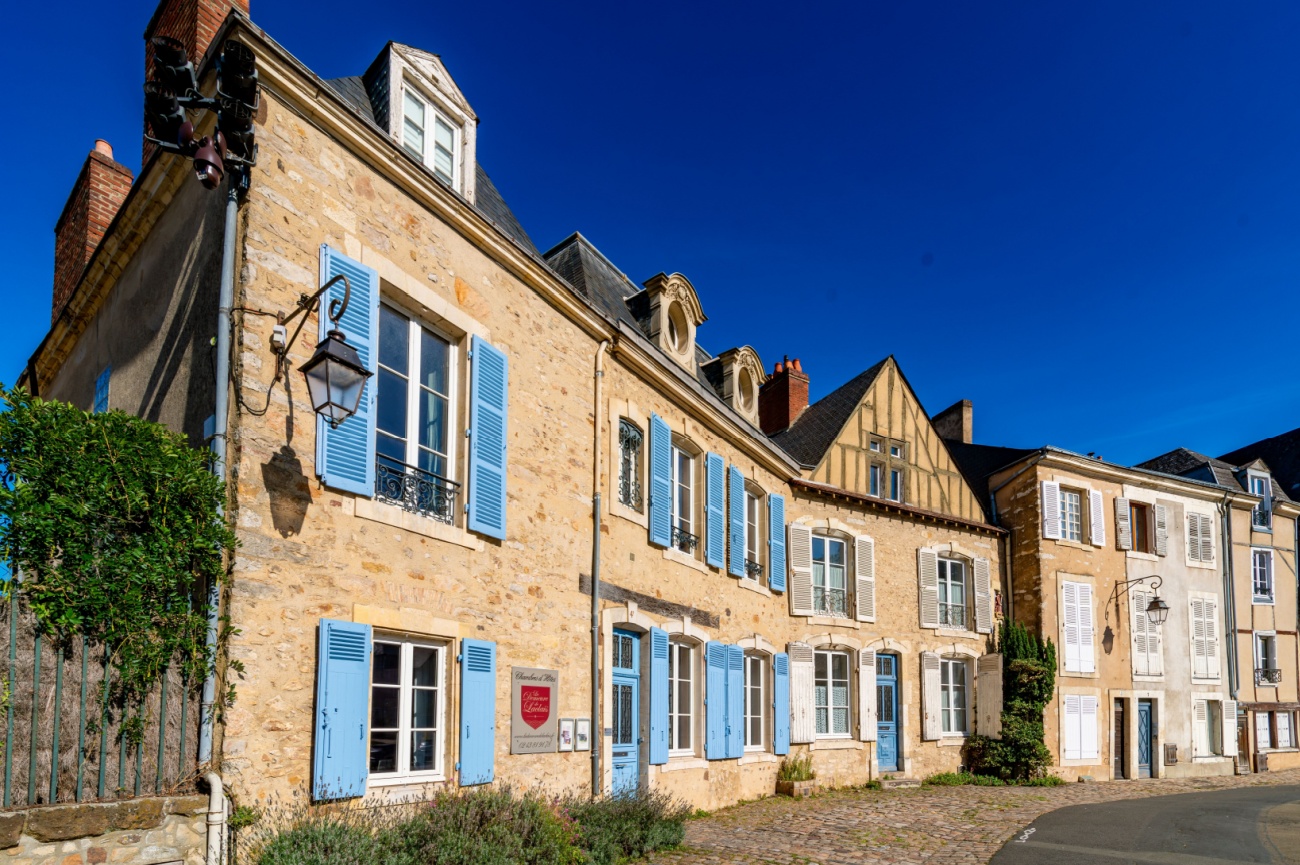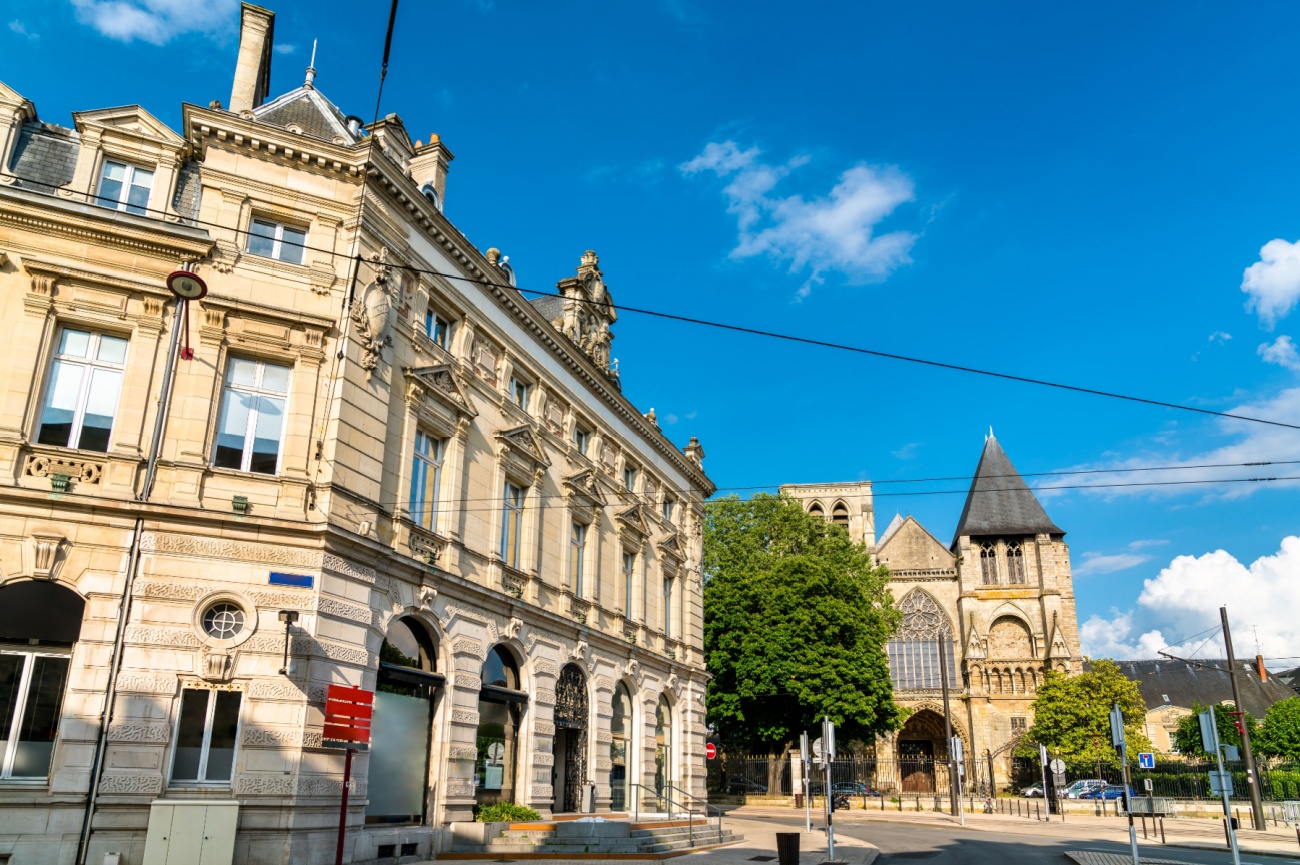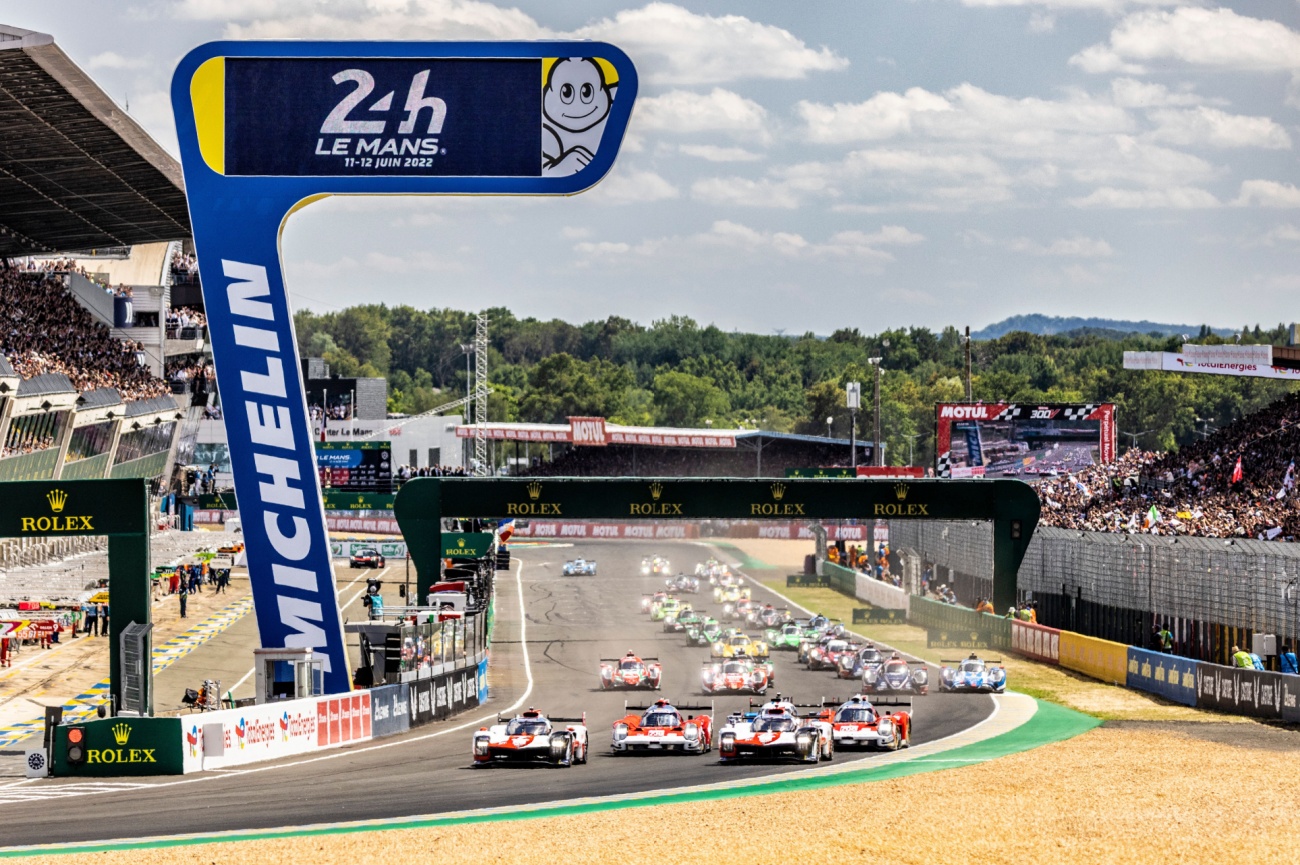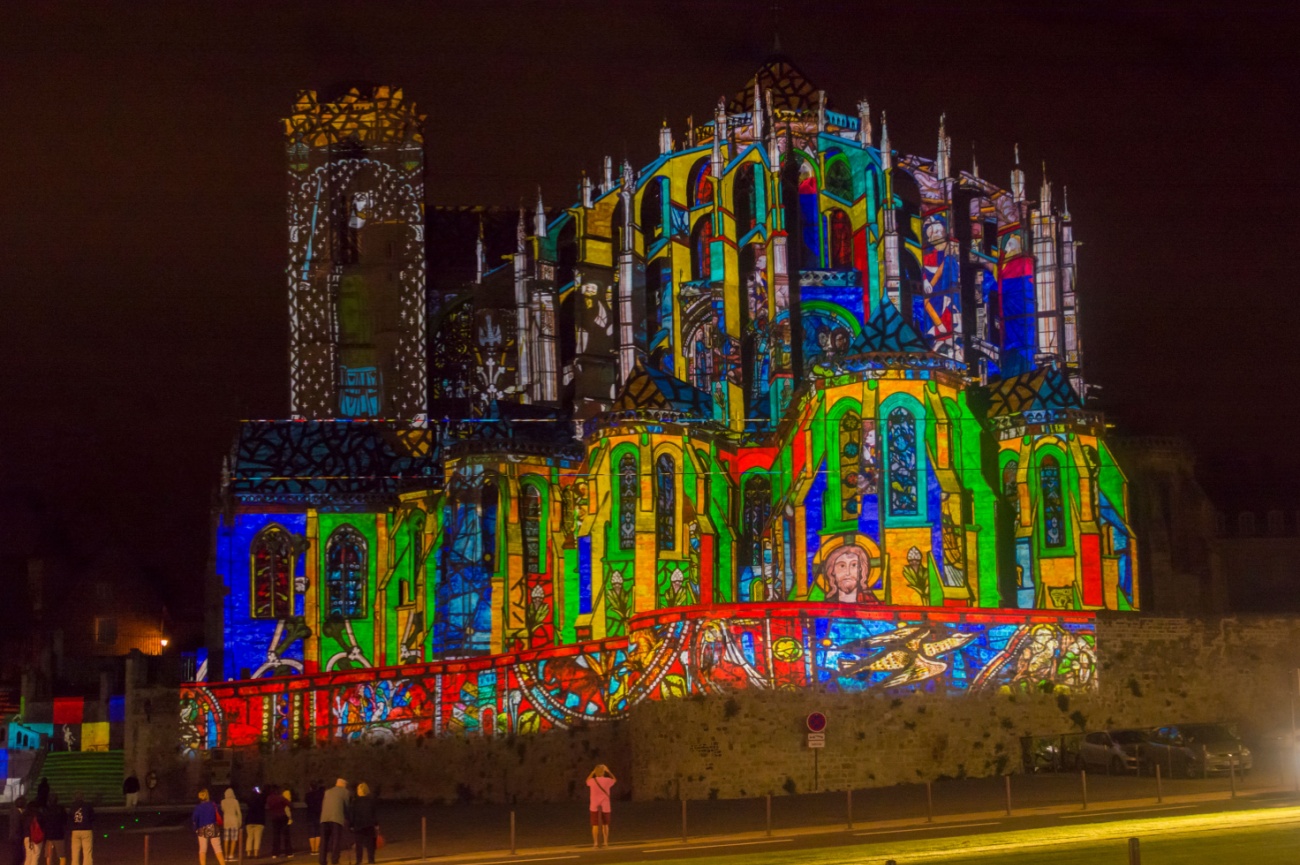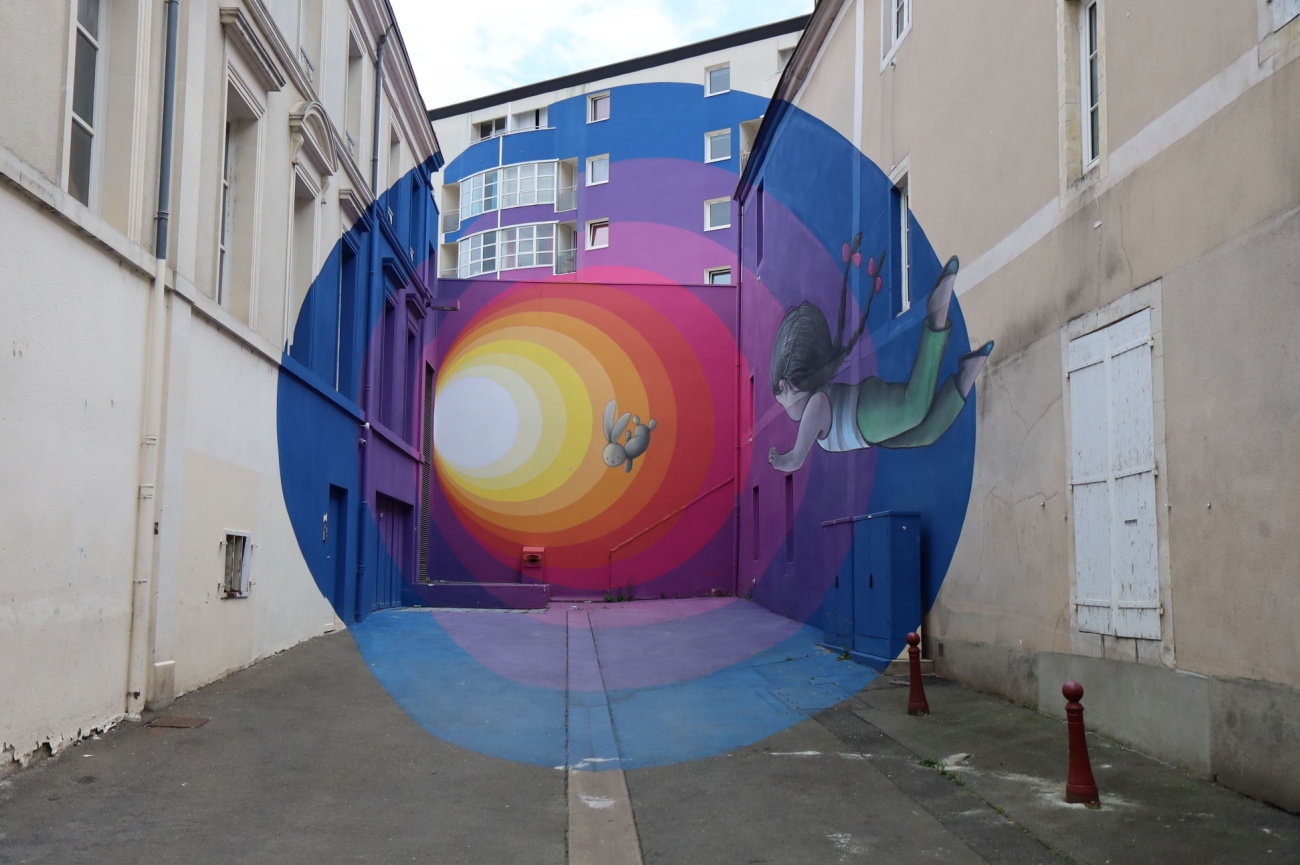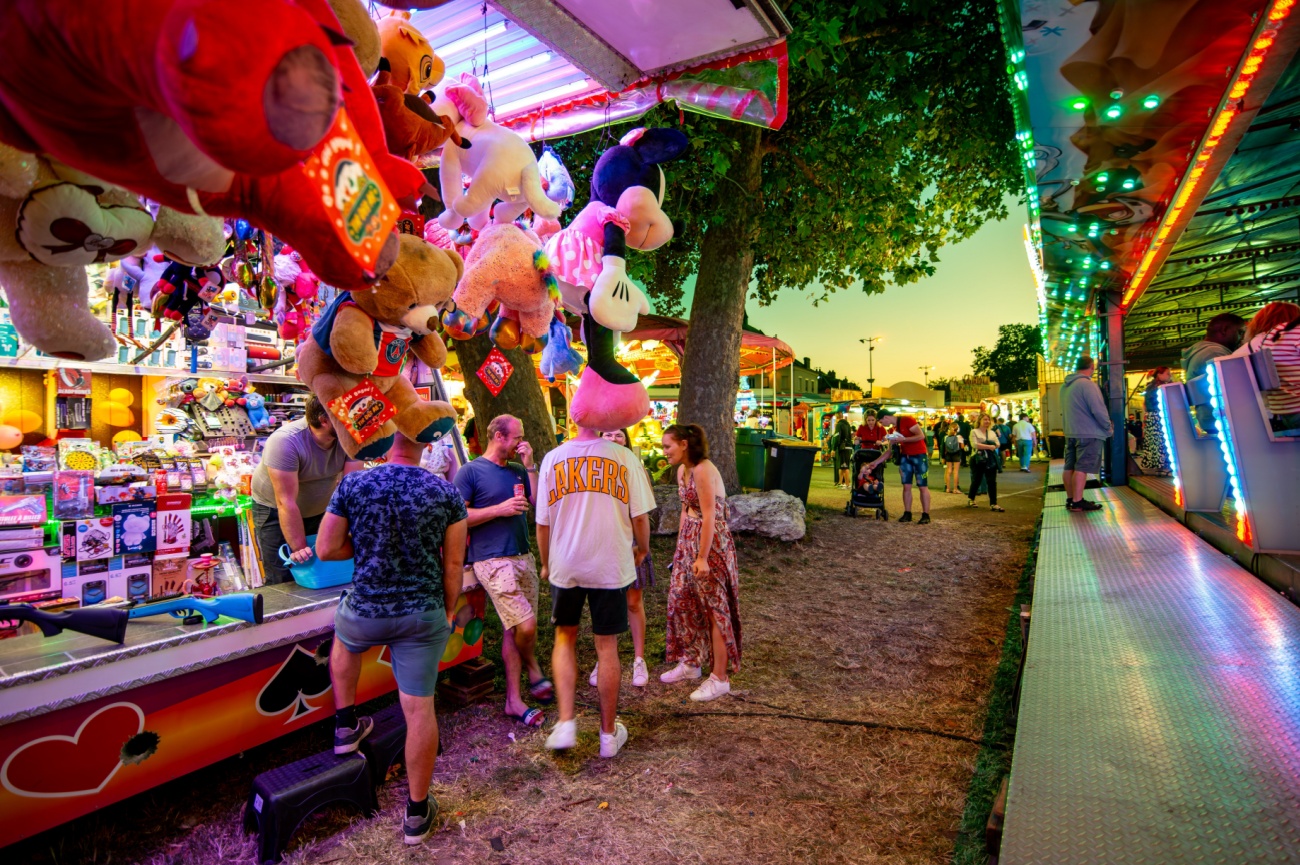THINGS TO DO IN Le Mans: 1-DAY ITINERARY
When you think about Le Mans, the first thing that probably comes to mind is the 24-hour race, held every year since 1923. In the middle of June, thousands upon thousands of motorsport enthusiasts descend upon the city to enjoy the race, a real test of endurance for the drivers. However, Le Mans has much more to offer than just racing. There is a beautiful historic old town dating back to the Middle Ages where you will see many half-timbered houses which have stood the test of time. You can visit stunning cathedrals, explore interesting museums, and indulge in delicious food in some of the many restaurants and brasseries in the city.
We have prepared a 1-day itinerary which takes in many of the important sites in Le Mans and have given you ideas of other things to see in town and in the surrounding area if you have more time.
Day 1

Morning: Cathédrale Notre-Dame De La Couture
Start your tour of Le Mans at this Catholic cathedral in the centre of town. Previously the abbey church of Saint Pierre de la Couture, most of it dates to the 12th century although the facade was changed in the 13th and 14th centuries to the Gothic style. There are two enormous towers which are unfinished, but the door is magnificently carved. Go inside to admire the stained-glass windows, designed in the 19th century, and the three sculptures by Germain Piton, one of the greatest Renaissance French sculptors. In the summer, take advantage of the free tours that are offered on Friday afternoons and Saturday mornings.
Place De La République
A five-minute walk takes you to the Place De La Republique, a beautiful square in the heart of the city. Flanking each side are historic buildings such as the Hotel de Ville and the Prefecture. Try to go on a Tuesday or Saturday when a market is held selling everything from fresh produce and baked goods to artisan-crafted jewellery and clothes. There are many cafes in the square so why not stop for a coffee and people watch? Also of note is some fantastic street art on some of the buildings.
Jean-Claude Boulard-Carré Plantagenêt Musée
Seven minutes from the square is this interesting museum concentrating on archaeology and history, particularly local history. The exhibitions begin with prehistory, which was millions of years ago, and go up to the Middle Ages. The permanent exhibition showcases a rich display of archaeological objects, one of the oldest being a biface, a tool shaped by man in prehistoric times. Another stunning exhibit is the Venus of Rexhiganos, a terracotta sculpture from the Gallo-Roman period around the second century AD. The museum also houses temporary exhibitions so you may be surprised at what is on offer. The great thing is that it’s free to go in apart from any interactive exhibits.
Once you have enjoyed exploring the museum, it will be time for lunch and there is a traditional French restaurant on the way to your next stop, Le Fou Du Roy.
Day 1, Morning - Le Mans Tour Map
Afternoon: Cite
Plantagenet
A two-minute walk from the restaurant is the old town, Cite Plantagenet, named after the English Royal House of Plantagenet, which ruled England for over 300 years. Le Mans was connected to the Plantagenets as King Henry II of England was born there and his son’s wife, Berengere de Navarre settled and died in the city.
Part of the Gallo-Roman walls are on one side of the historic centre, built in the third century to protect the city. Wandering through the streets, you will come across beautiful houses from the Middle Ages with timber frames as well as some fantastic Renaissance mansions. If you are lucky enough to be there on a Heritage Day, you will find some of the private homes open for viewing. They are all free to enter.
Maison De La Reine Bérengère
It is thought that Queen Berengere, wife of Richard of Lionheart of England, died in the building that originally stood here. The current house was built in the 13th century and has been well-preserved. The facade is impressive with carvings of the Virgin Mary, the Archangel Gabriel, and Italian arabesques. Go inside as there is a museum about the city showcasing paintings, sculptures, and furniture from mediaeval times to the present day. There is an unusual exhibition on the top floor composed of finials, ornaments that decorated the roofs of buildings in days gone by. The museum offers guided tours and workshops relating to the collection. It is just a minute’s walk from Cite Plantagenet.
Cathedral De Saint Julien De Le Mans
Another minute’s walk takes you to the main cathedral of the city, the Roman Catholic Cathedrale de Saint Julien de le Mans. As you approach, you will notice that it has spectacular flying buttresses and intricate sculptures on the facade. Once inside, you will see beautiful stained-glass windows, including a 13th-century rose window, elaborately decorated chapels, and magnificent vaults. There are models showing how the cathedral developed from the original building of 500 AD to what we see now which was built in the 13th - 14th centuries.
Musee De Tesse
Within nine minutes, you will be at the Musee De Tesse, the Museum of Fine Arts. It was founded in 1803 and showcases more than 2,000 works of art, including paintings, sculptures, and decorative arts. You will be able to see works created by artists such as Botticelli, Rubens, Monet, and Picasso, and will be taken on a journey through European art from mediaeval works of art through to the 19th century. A highlight is the display of Ancient Egyptian archaeology which comprises 125 pieces dating as far as back as 6,000 years. Be sure to see the sarcophagus of the priest, Nakhmontou from 3.500 years ago as it is stunning. The museum also holds temporary exhibitions, offers guided tours, free concerts, and beautiful gardens to explore. If you feel like taking a break, there is a cafe which serves snacks, hot and cold drinks, wine and beer.
Les Jardins Des Plantes
If you have time, the Jardin Des Plantes is the perfect final stop in your day’s itinerary. It is the city’s botanical garden which was created between 1867 and 1870. It covers five hectares and is free to enter. The garden is divided into two parts connected by a rock underpass. One garden is landscaped with winding paths and a water feature. The other is a regular garden with an area planted with roses and a terraced mall with lime trees. In 2004, a bandstand was built in the gardens and during the summer, free concerts are held on Sunday afternoons. Children will enjoy the park as there is a carousel and a playground.
Day 1, afternoon - Le Mans Tour Map
Other Things To Do In Le Mans
- Gallo Roman Walls: The Cite Plantagenet was surrounded by a third-century wall that once measured 1,300 metres. Now, 500 metres of this wall remains, with 12 imposing towers, all in good condition. It is worth getting up close as the wall has a stunning geometric pattern created from pink mortar, red brick, white limestone, and sandstone which have been layered to create this effect. It is also interesting to see that rubble from other buildings has been used to create parts of the wall.
- Musée Des 24 Heures Du Man: This museum is dedicated to the Le Mans 24-hour race and is 8 km south of the historic old town. A knowledgeable guide will take you on a guided tour of the museum and tell you about the race's history. There are 120 vehicles on show, 40 of which were race cars that competed in the 24-hour race. Also on show are the official Audi safety car, race suits that belonged to race champions, goggles, and vintage filling stations. In addition, there is a workshop tour on one Wednesday each month which focuses on a vehicle from the collection. You first learn about its history with a guide and then the workshop manager will tell you about the restorations and repairs that have been carried out on the car. It is the perfect tour for the racing car enthusiast.
- Tour Of The Circuit Of The 24-Hour Le Mans Race: You can book a two-hour guided tour of the racetrack at the museum. The tour involves walking the circuit, some of which are on public roads and others on a racetrack. The tour guide explains the race and tells you interesting stories about previous races and drivers. You may get the chance to go on the podium or into the speaker room, though this isn’t guaranteed.
- Abbaye De L’Epau: You will find this abbey at the edge of the city. It is one of the best Cistercian abbeys in the country and is where Queen Berengere is buried. Founded in 1229, it is a peaceful place to reflect on life. The south facade has some beautiful arches, while inside, there are stunning 14th-century frescoes. It isn’t certain where in the abbey the queen is buried but there is an effigy to her which can be viewed.
- Marche Des Jacobins: The main market of Le Mans is held in the Place des Jacobins on Wednesday and Sunday mornings. Here you can sample tastes of the region, such as rillettes, a meat spread made with pork although other meats and even seafood can be used. It is cheaper than pate but just as delicious and is served on bread or crackers. There are vendors selling fresh fruit and vegetables from local market gardens and orchards, as well as fresh meats, and a delectable range of French cheeses. If you fancy something sweet, shortbread is one of the offerings. Finally, wine lovers will be in their element as local wines from the Loire Valley are on offer, such as Jasnieres.
Day Trips From Le Mans
- Les Etangs De Loudon: This beautiful forest, 18.3 km southeast of Le Mans, doesn't only have trees, but ponds, peat areas, moors, and lawns. There are several hikes which you can take with the possibility of seeing wildlife, such as wild boar, falcons, harriers, goshawks, and purple herons.
- Donjon De Ballon: The Donjon De Ballon is a fortress built about 1,000 years ago, lying 21 km north of Le Mans. You can visit the building where you will first see the guard’s room with an enormous fireplace and then the dining room. The Henri IV room is on the first floor and is where the king slept when he visited. The Phillippe Auguste room takes up the second floor and gives fantastic views of the countryside. The gardens are particularly beautiful and interesting. There is an enclosed garden with curtain walls and filled with medicinal and culinary plants surrounded by topiaries. You will also find an orchard and a rose garden which houses more than 100 rose plants as well as shrub peonies and clematis.
- Sille-Le-Guillaume: Sille-Le Guillaume is 34 km northwest of the city and is a town with a beautiful lake. It has both a historic centre and a new town. There is a chateau which you can visit in July and August. It was partially destroyed during the One Hundred Years War but was rebuilt in the 15th century with a defensive tower which was never used. In the 16th and 17th centuries, residential wings were added, turning it into a beautiful chateau.
- Fresnay-Sur-Sarthe: This is a small town on the banks of the River Sarth, 36 km northwest of Le Mans. It is a lovely place to take a peaceful stroll. Start in the old town where you will see two and three-storey stone houses and a few mediaeval half-timbered houses. Visit the Place de Bassum where there is a traditional market hall, shops, and restaurants. Then go to the castle grounds which are now a public garden. All that remains of the castle are some of the defensive walls and the walls of the original keep. The gardens, however, are beautiful and overlook the river. Another highlight of the town is the Musee de la Coiffe which is dedicated to lace bonnets.
- Château Du Lude: Château Du Lude is the first chateau you reach when approaching from the north of the country and it is still lived in, having been in the same family for 250 years. It was originally built as a fortress in the Middle Ages but was added to and became a home in the 15th century. The defensive slit windows were opened up so that they let in light and the rooms were extravagantly decorated. The gardens are beautiful and were landscaped in the 17th century. They include a rose garden and a splendid vegetable garden. You can visit the chateau between April and September but while you can explore the gardens on your own, the chateau is by guided tour only.
- La Ferte Bernard: This mediaeval town is 41 km northeast of Le Mans and is steeped in history. Here you will see the magnificent gateway, Porte Saint-Julien, with its tall towers, as well as restored mediaeval houses. The traditional market hall with its gothic-style windows, is striking and the Church of Notre-Dame-des-Marais in the old town is worth visiting. It was built in the late 15th century in a flamboyant Gothic style, with gargoyles and other stonework. Inside, however, the style is Renaissance with a 16th-century organ and stained-glass windows added over five centuries. There is a castle in town but just two towers, a 15th-century wing, and some walls remain. It houses a 12th-century chapel that holds exhibitions.
- Saulges: The town of Saulges is 45 km west of Le Mans. Its main attraction is the cave complex which had been lived in during prehistoric times. Two of the caves can be visited and there you can view walls which were painted when they were first inhabited. Other highlights of the town are a traditional washhouse and a 19th-century lime kiln. There are two churches worth visiting. Part of the Church of Saint-Pierre dates to the 8th century which means that it is one of the oldest churches in the area. The Church of Notre Dame was built in the 11th century and has a large bell tower. There is a beautiful statue inside of the Holy Trinity, created in the 15th century.
- Les Jardins De La Mansonière: These beautiful gardens are 48 km northwest of Le Mans in the village of Saint Ceneri-Le-Gerei. It was created in the mid-1980s around a stone house and grew in size over the years. There are several garden rooms, many inspired by English gardens. Don’t miss the stunning rose garden with its rose arches and borders filled with roses and herbaceous plants. The calm garden has a Japanese theme, while the scented garden is filled with aromatic flowers and plants. The garden of contrasts is interesting as it has a border filled with golden foliage and darker-leaved plants. When you have finished exploring, enjoy a cup of tea and a slice of cake in the Salon de The.
- Évron Abbaye De Notre Dame: Evron Abbey De Notre Dame is 49 km northwest of Le Mans. The town of Evron developed around the Benedictine abbey, founded in the 9th century. The crypt is the oldest part of the building with much of the rest constructed in the 11th century including the tower. A new church was built in the 13th century in the Gothic style, while the abbey was renovated in the 18th century in the Neoclassical style. Highlights of the church include stained glass windows created in the 14th and 15th centuries and a wooden statue of the Virgin Mary covered in silver, from the 13th century.
- Alençon: The town of Alencon is 50 km northwest of Le Mans and is best known for producing lace. There is a museum in town which tells the story of lacemaking in Alencon. Be sure to visit the old town with its half-timbered buildings and ornate stone houses. Take a stroll by the Sarthe River and have a drink or meal in one of the many restaurants and cafes. A highlight of the town is the 16th-century Basilica de Notre Dame which has an impressive facade with elaborate stone carvings around the entrance. There are beautiful stained-glass windows and mosaics inside. Visit the 17th-century Jesuit church which is home to over 100 mediaeval manuscripts. If you are there on a Thursday or Saturday morning, head to the market to try local produce and to mix with the locals.
- Château de Blois is 145 km east of Le Mans but is worth the journey. It is in the centre of the town of Blois and is a mixture of architectural styles because it took centuries to build. You will see flamboyant Gothic, Renaissance, and Classical styles throughout the building. Highlights include the beautiful Renaissance spiral staircase, frescoes in the royal apartments, and the bedroom of Queen Catherine de Medici which has a coffered ceiling. Housed in the Chateau is the Musee des Beaux Arts which displays paintings and sculptures from the Renaissance to the 19th century. From spring until autumn, there is a sound and light show at the castle lasting for 45 minutes. It takes place in the evening for the best effect and tells the history of the chateau.
- Chateau D’Angers: This chateau is 96 km southwest of Le Mans. It was built in the 13th century as a fortress and is surrounded by massive walls which you can walk along for great views. Climb one of the 17 towers for a panoramic view of the city. You cross a drawbridge to get to the chateau and you can then visit the gardens, the chapel, and the royal apartments. The moat is beautiful as it is now filled with flowers and plants. The Tapestry of the Apocalypse is housed in the chateau. It was created in the 14th century and shows the story of the Apocalypse as written in the Book of Revelations in the Bible. The tapestry is massive, measuring 100 metres, so expect to spend some time admiring it.
- The Chateau de Montmirail is 61 km northeast of Le Mans. It was built in the 15th century at an altitude of 225 metres, offering amazing views. It was built and renovated over many centuries, from the 11th to the 19th, so it is a mixture of architectural styles. The Marquis Neuilly bought the chateau in 1718, and the castle has regularly been redesigned by the different generations. Guided tours are offered.
- Sainte-Suzanne: The village of Sainte-Suzanne is 50 km east of Le Mans and has been designated to be one of the most beautiful villages in the country. It is a fortified village situated above the River Erve. The ramparts are nearly intact, and you can climb to the top of them for fantastic views. There is a chateau in the village which has an 11th-century keep, a Mediaeval bakery, and 17th-century accommodation. As well as the chateau, visit the Musee de Auditore to find out about the history of the village. If you are there in August, be sure to check out the Mediaeval festival.
Things To Do With Kids In Le Mans
- Escape Time Le Mans: Escape Time Le Mans offers six different escape rooms for the whole family to enjoy although children must be 10 years or older. You have an hour to get out of the room by solving puzzles, but there is a game master who will support you throughout the experience.
- VR Evolution: VR Evolution is in the heart of the city and offers experiences in virtual reality. Take part in an action and adventure game or try to get out of an escape room. You wear a headset for the experience, with hand controllers, and have 60 minutes to immerse yourself in a different world. The games are for two players or more. Themes include the Wild West, paintball, zombies, and many more.
- Le Petit Train Du Man: This road train is fun for the whole family. Get on board and see all the highlights of the city with a knowledgeable guide. The trip lasts for around 40 minutes.
- Speed Park Le Mans: This is a leisure facility where you could easily spend a few hours with the whole family as it is 7,000 m2 of fun. There is a quiz room for the over eights. In teams of 4 - 16 players, answer questions in a set of three rounds. It lasts for around one hour. Children of seven and over can have fun on the 300-metre go-kart track. There is a bowling alley with 30 bowling lanes, an arcade with 15 games, and 16 billiard tables. Last but not least are the laser games for those seven years old and over.
- Arche De La Nature: Arche De La Nature is 10 minutes from the centre of the city. It covers 500 hectares and teaches children about nature and farming. There are trails which lead to attractions such as the Maison de l’Eau where there is an aquarium with regional freshwater fish such as trout and bream. At the Maison de la Prairie, there are apiaries where you can learn about bees. In the Maison de la Foret, you will find large pens with wild species such as deer, boar, partridges, and pheasants.
- Musee Vert: The Natural History Museum covers geology, botany, palaeontology, and zoology and houses 400,000 objects including 100,000 shells, many of which belong to extinct molluscs. Children will love seeing the fossils from the Mesozoic Era, the meteorites from the 18th and 19th centuries, and the models of mammals, birds, and sea life. The great thing is that, apart from animations, the museum is free, including temporary exhibitions.
- Spaycific Zoo: The zoo is 14 km south of Le Mans and exhibits around 1,000 animals with around 150 species. The animals have plenty of room to roam so you won’t see them cramped in cages. Visit the Exottarium and see snakes, lizards, spiders, and other insects. Wallabies and dingoes inhabit the Australian zone and there are large Alpine parrots from New Zealand. The African aviary measures 12 metres in height and is the second-largest aviary in the country. It is the only place where marabou storks, who have a three-metre wingspan, can fly in captivity. Rare animals housed in the zoo include the flying opossum, the bobcat, the honey bear, and leopard geckos.
- Papea Parc: Papea Parc is a small theme park nearly 5 km east of Le Mans. You could easily spend the day here with your family as there are restaurants and kiosk, including a creperie. You are also welcome to bring a picnic. There are over 30 attractions, some geared at younger kids and others at older children. For the young ones, there are bouncy castles, carousels, and a petting zoo. There are roller coasters for older kids as well as a swing boat, and a log flume. The park also has a circus and a waterpark which offers several water games as well as slides and spray tunnels.
- Bowling Du Mans is fun for the whole family from the age of three. Minors must be accompanied by an adult. There are 26 bowling lanes and other activities to enjoy, including table football, an electronic basketball hoop, pinball, air hockey, and table football.
- Aquatic Centre Atlantides: There are different activities to choose from at the Aquatic Centre Atlantides. In the sports hall, there is a sports pool, a diving pool, and a training pool. In the recreational hall, you will find an 80-metre slide, a paddling pool, a leisure pool with a hot tub, and a spa. Outside, there is a wave pool for use in the summer.
- Cityglace: This is an ice rink which is open six days a week. As well as skating sessions, on offer are activities such as limbo competitions, frisbee on ice, slalom, Kimball on ice, going under hoops, and sledging. On Sunday mornings and every morning in the school holidays, an ice painting workshop is offered. In the evenings you can skate with a light show and music. During school holidays, skating classes are on offer.
- Skatepark Spot is one of the biggest skateparks in the country. You can enjoy skateboarding, BMX. roller blading, and freestyle scooter. There is also a dance hall, and courses are offered during school holidays.
Winery Near Le Mans
- Château Gaudrelle: Le Mans is in the Loire Valle, but it is in the northern part, and although you can enjoy Loire Valley wines in the city, there aren’t many wineries close by. The nearest is Chateau Gaudrelle, 99 km south, and if you are prepared to make the journey, you will find that it is well worth it. The estate uses organic farming practices and is now incorporating biodynamic methods. It produces AOC Vouvray wines on 16 hectares of vineyards mainly with the Chenin Blanc grape. You can take a tour of the troglodyte cellars and then taste the wines.
Golf Clubs Near Le Mans
- Golf Des 24 Heures - Le Mans: The golf course is 12 km south of the city. It covers 55 hectares and is a peaceful spot with an exciting 18-hole golf course. There are fairways lined with oak trees and water hazards to enhance the game. Also on offer is a three-hole course which is good for the beginner, a large driving range with some covered stations, a putting area, and a practice bunker.
- Le Mans Golf Club - Sarge: Le Mans Golf Club is just over 6 km northeast of Le Mans. It has a challenging 18-hole golf course, and the club offers a free trial session.
Racecourse In Le Mans
The racecourse of the 24-hour race is made up of public roads which are closed for the duration of the race and a racetrack. It covers 13.6 km and the stadium at the Bugatti racetrack seats 100,000 people. The circuit is used 10 days a year. As well as the 24-hour race, there are other races, such as Le Mans Classic and the 24-hour motorbike race.
Where To Eat In Le Mans
Le Mans offers a varied culinary experience. There are both cosy bistros and elegant restaurants to be found, some serving traditional French fare, others innovative cuisine. There are also foreign restaurants if you want a change.
Authentic French Restaurants
- La Ciboulette: The menu in this welcoming restaurant changes seasonally. The quality of the food is superb and the restaurant stocks an excellent selection of wines to pair with the dishes. For a starter, try the rillettes or the duck foie gras. Mains include fillet mignon and fish en paupiette. There is a vegetarian menu with dishes such as spinach and ricotta ravioli and there is also a seven-course tasting menu served between 1 and 8 pm.
- La Vieille Porte: This is a bistro-style restaurant that offers delicious food and excellent service. It serves traditional French cuisine such as snails or foie gras as a starter, beef tartare, duck, fish cassoulet, and steaks as the main course.
Sophisticated Restaurants
- Popote & Papilles: This modern restaurant offers a sophisticated dining experience with excellent food and fine wines. The menu combines tradition with innovation and uses local and seasonal products, meaning that the menu can change. Starters could include monkfish gravadlax or octopus. Main courses could be veal nuts, beef tartare, or risotto for vegetarians. Deserts are to die for and include creme brulee and a more innovative strawberry and kiwi soup.
Foreign Restaurants
- Layaly 24: Layaly 24 is an excellent Lebanese restaurant with a menu consisting mainly of mezzes. It offers a good choice of vegetarian food, great wines, and best of all, the prices are reasonable.
- Tokyo Sushi: If you are a fan of Japanese food, you won’t go far wrong with Tokyo Sushi. It offers excellent sushi and friendly service.
- LIberta Le Mans: This Italian restaurant is up-beat and trendy, with stylish decor and great service. It offers a wide variety of Italian dishes including pizzas cooked in a wood-burning oven and pasta dishes such as fettuccine alle vongole.
Where To Stay In Le Mans
- Leprince Hotel-Spa: This four-star hotel features a garden for the use of guests, a shared lounge, a terrace, and private parking. The rooms are air-conditioned, have complimentary Wi-Fi, a TV, and a hairdryer, and they are ensuite. Breakfast is a continental buffet and there is a bar open for the rest of the day.
- Hotel Concordia Le Mans Centre Gare: The Hotel Concordia is in the heart of the city and is housed in a classical historic building. Free Wi-Fi is offered throughout the premises and there are four large meeting rooms. The rooms are exceptional and offer air conditioning, a courtesy tray, and a private bathroom. Some rooms have a minibar or a Nespresso machine. There is a buffet breakfast on offer and a brasserie, Amphitryon, for other meals. Lunch and dinner are served from Monday until Friday while there is breakfast every day. The food is seasonal and traditional, and you can dine either on the terrace or in the dining room. The hotel is four-star.
- Logis Saint-Flaceau: This four-star bed and breakfast has excellent views of the city. It is a beautiful historic building with an inner courtyard, patio, and sun terrace. There is complimentary Wi-Fi throughout the building. The rooms have a tea/coffee maker, a TV, and a private bathroom, while some rooms have a kitchenette.
- Chambre D'Hôte Maison Des Ecrivains: This hotel is three-star and is in a prime position, just 50 metres from the Cathedrale de Saint Julien. The property has been renovated recently so you will be spoiled by your surroundings. The rooms have complimentary Wi-Fi, a coffee machine, a patio, a private bathroom, and a hair dryer. It is 6.4 km from the Le Mans circuit.
- Chambres D’Hotes Le Clos D’Hauteville: This three-star bed and breakfast is in a historic building 7.5 km from the Le Mans circuit. The rooms are air conditioned, have a seating area, a TV, free Wi-Fi, and a private bathroom with complimentary toiletries and a hairdryer. Guests can enjoy the garden, the shared lounge, and the sun terrace.
- La Demeure De Laclais: This bed and breakfast is three-star and is in a beautiful historic 19th-century building in the historic centre of Le Mans. The rooms are elegant and classic, have a TV, and a private bathroom. They have either a view of the garden or the city. In the morning, a continental breakfast is served and there is a bar where you can enjoy a drink inside or on the terrace with views of the city. The bed and breakfast is 50 metres from the Cathedrale de Saint-Julien.
Best Time To Visit Le Mans
The 24-hour race is held in the middle of June so this weekend will be busy with many hotels fully booked. If you aren’t a car enthusiast, it is best to avoid this time. The best time to visit is in July and August when the weather is very warm and perfect for outdoor attractions. However, it can be busy because of the school holidays. If you want to avoid the crowds, May, June, and September usually have pleasantly warm weather. The last week of October and November have the most rain, while December, January, and February are the coldest.
Festivals In Le Mans
- 24 Hours Of Le Mans: The most important festival in Le Mans is the 24-hour endurance race which has been run each year since 1923. The car that wins is the one that covers the greatest distance in 24 hours. The cars can travel up to 366 km/hour, but the racing teams must work out how fast they can travel according to the car’s ability to run for 24 hours without breaking down. The race is held on the Circuit de la Sarthe, which comprises public roads and sections of a racing track. As it takes place on the shortest night of the year when it is likely to be hot, conditions are harsh for the drivers, but this doesn’t put the drivers off from competing as it is a revered race.
- La Nuit Des Chimères: La Nuit Des Chimeres translates to Night of Dreams. During the summer months from Tuesday to Saturday in the evenings, the seven main attractions in Le Mans are lit up beautifully, the themes matching the attraction. For example, the Cathedrale de Saint Julien is lit up with Gothic frescoes showing knights, angels, and legendary beasts. The Gallo Roman walls are made to look like a mosaic from Roman times and on the Maison de la Reine Berengere, Queen Berengere is shown as a ghostly figure.
- Urban Art Festival: The Urban Art Festival is held on the first weekend of July at the Gue De Maulny Park. There are street artists, concerts, DJs, and workshops for all ages celebrating urban art and music.
- La Fête Foraine Au Panorama: This is a three-week funfair held in the city in spring and autumn. It includes around 100 attractions, including thrill rides, ice palaces, shooting ranges, and bumper cars. Various food stands are also present throughout the fair.
- Christmas Market: Each year from the end of November to the end of December, a Christmas market is held in Place de la Republique. Wooden booths are set up selling locally sourced gourmet produce such as nougat, chocolate, macarons, and pate. In addition, you might find some Christmas gifts like jewellery and leather goods. An enormous Christmas tree dominates the square and there is a Ferris wheel, an ice rink, and live music on Saturdays. There are plenty of food stands selling delicious crepes, waffles, and mulled wine.

